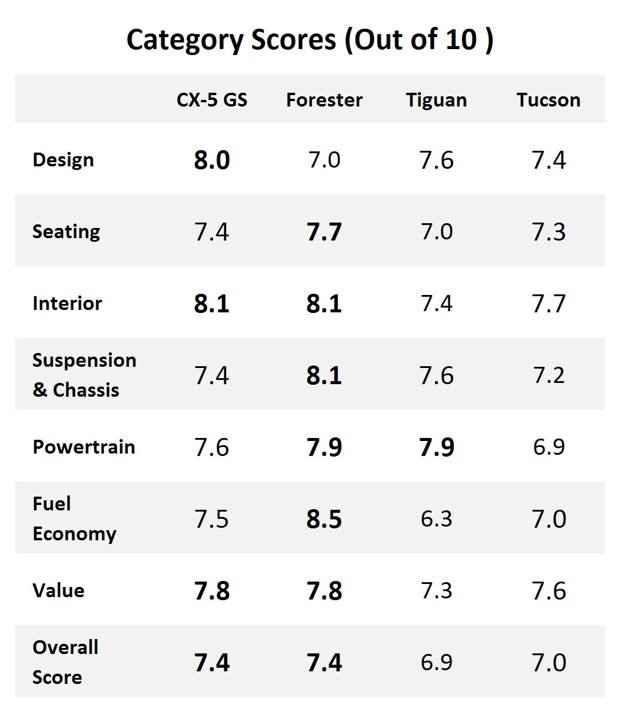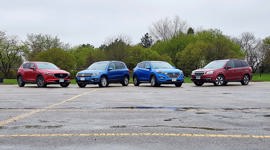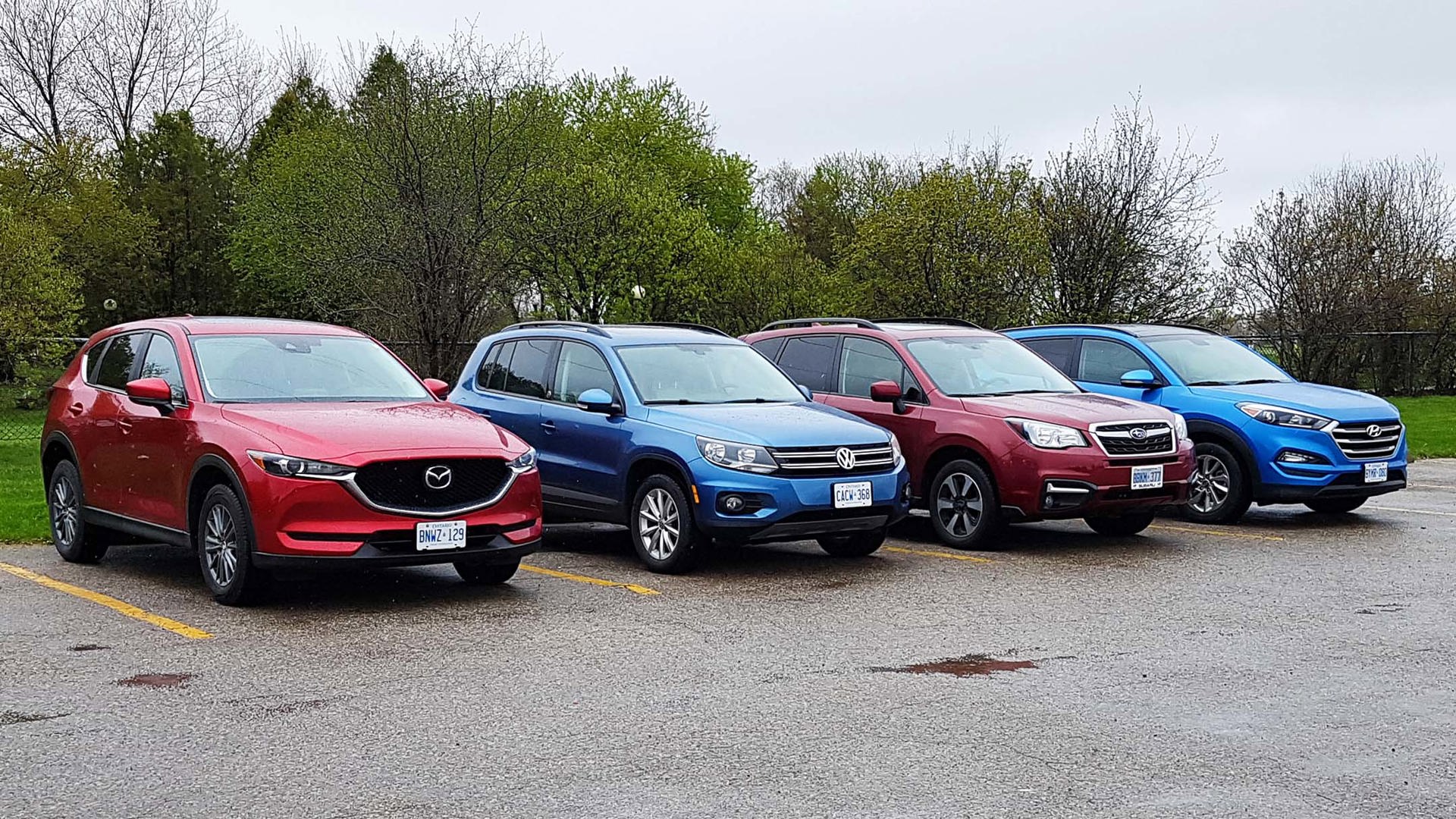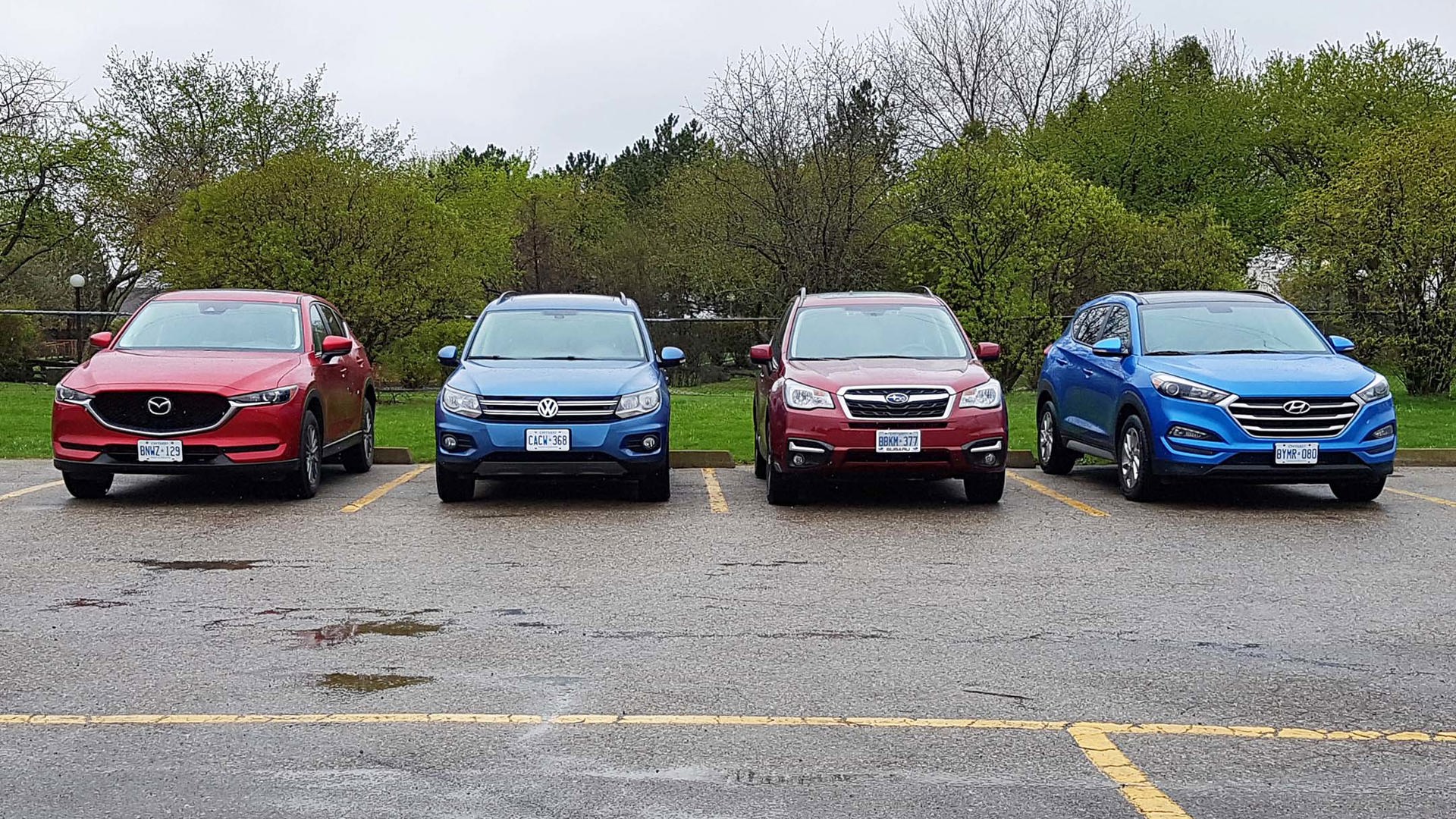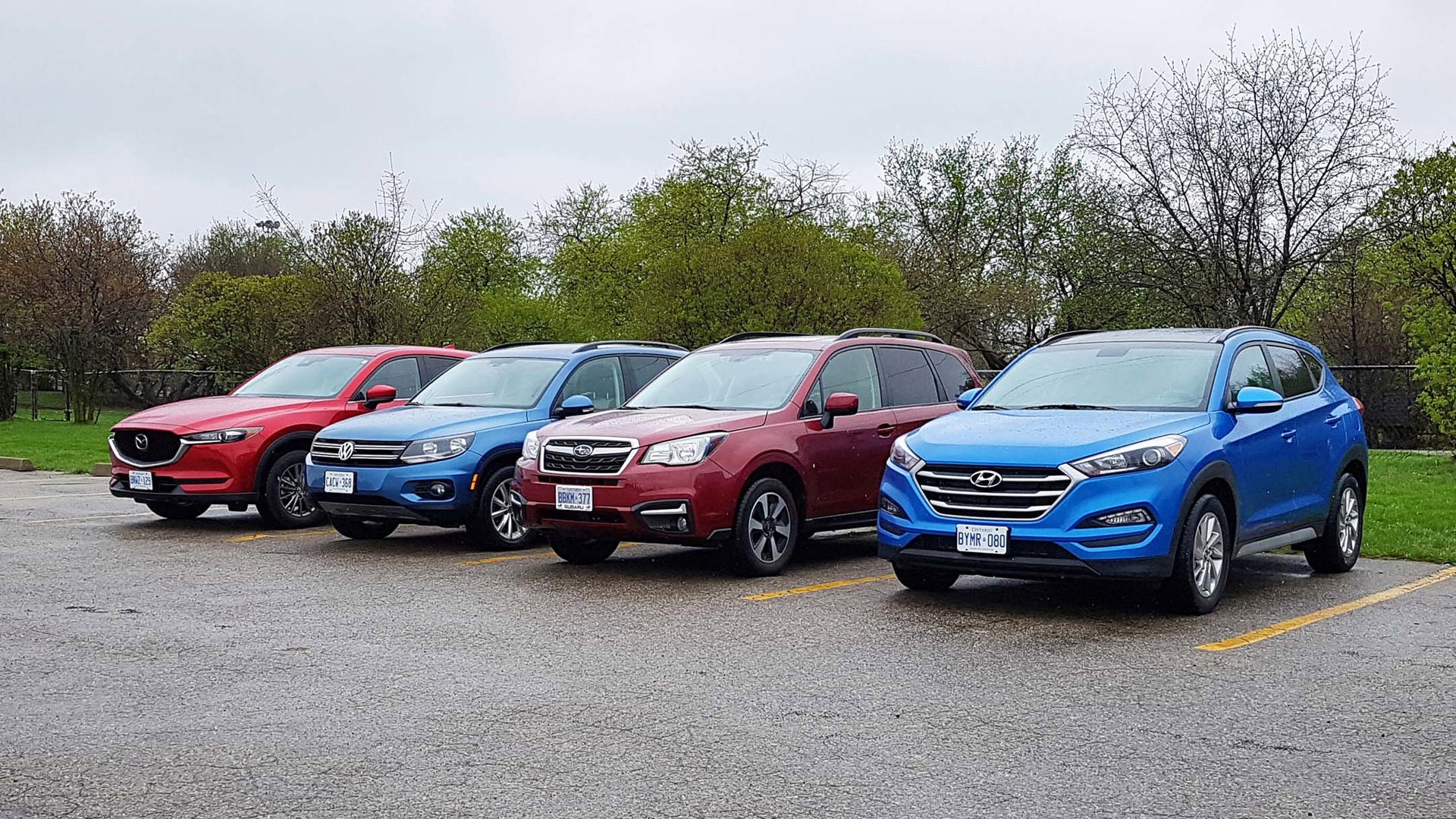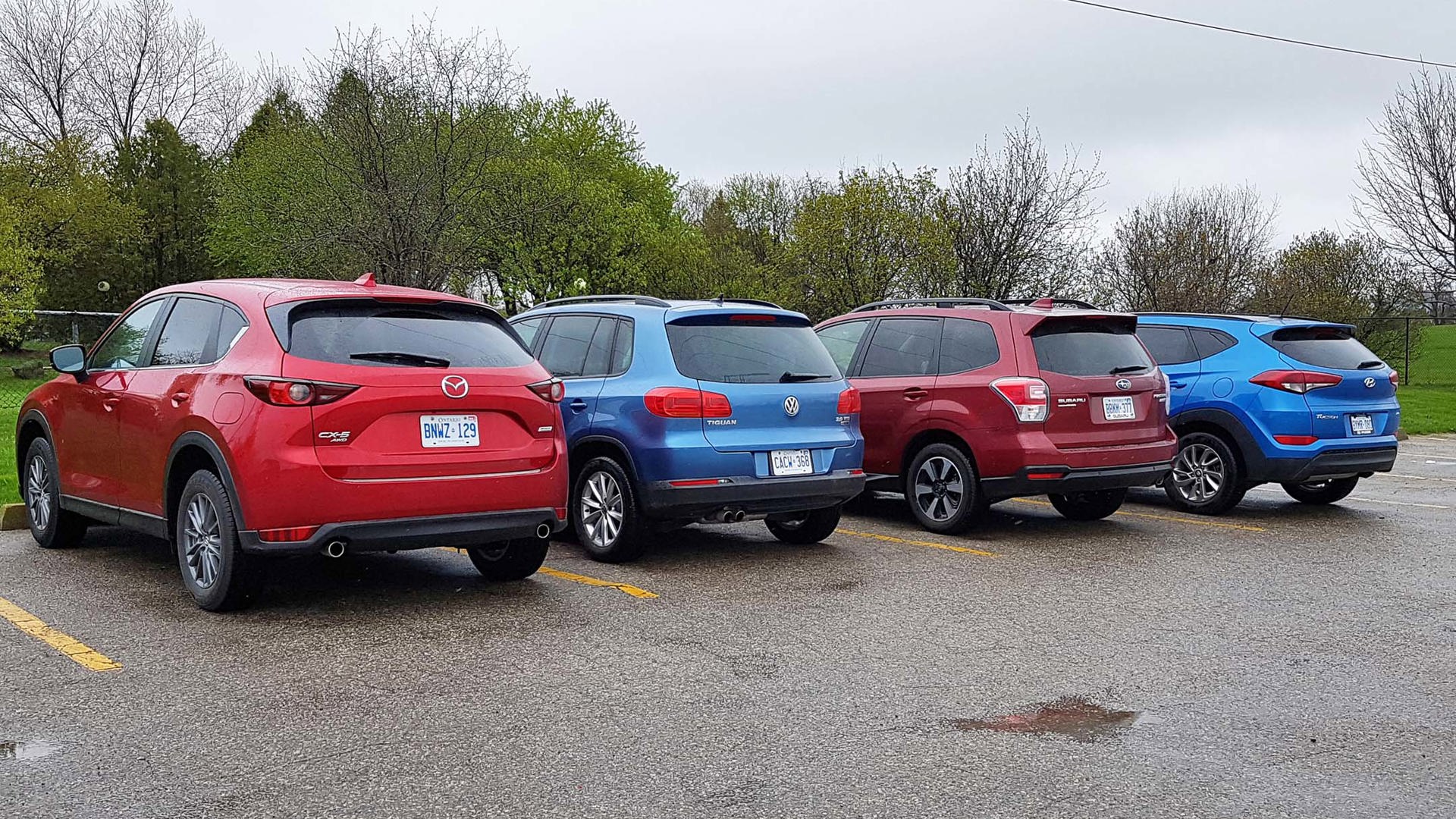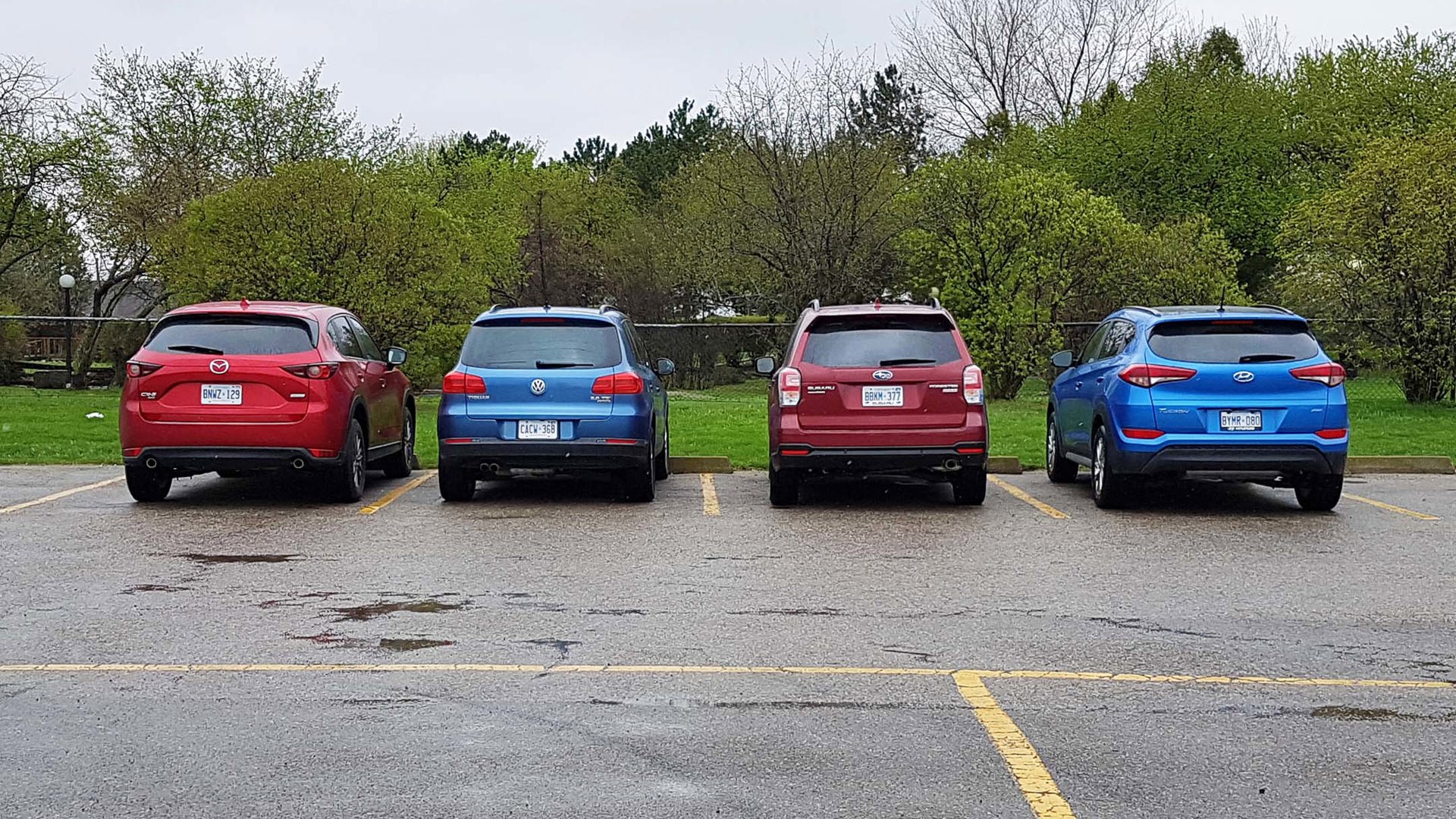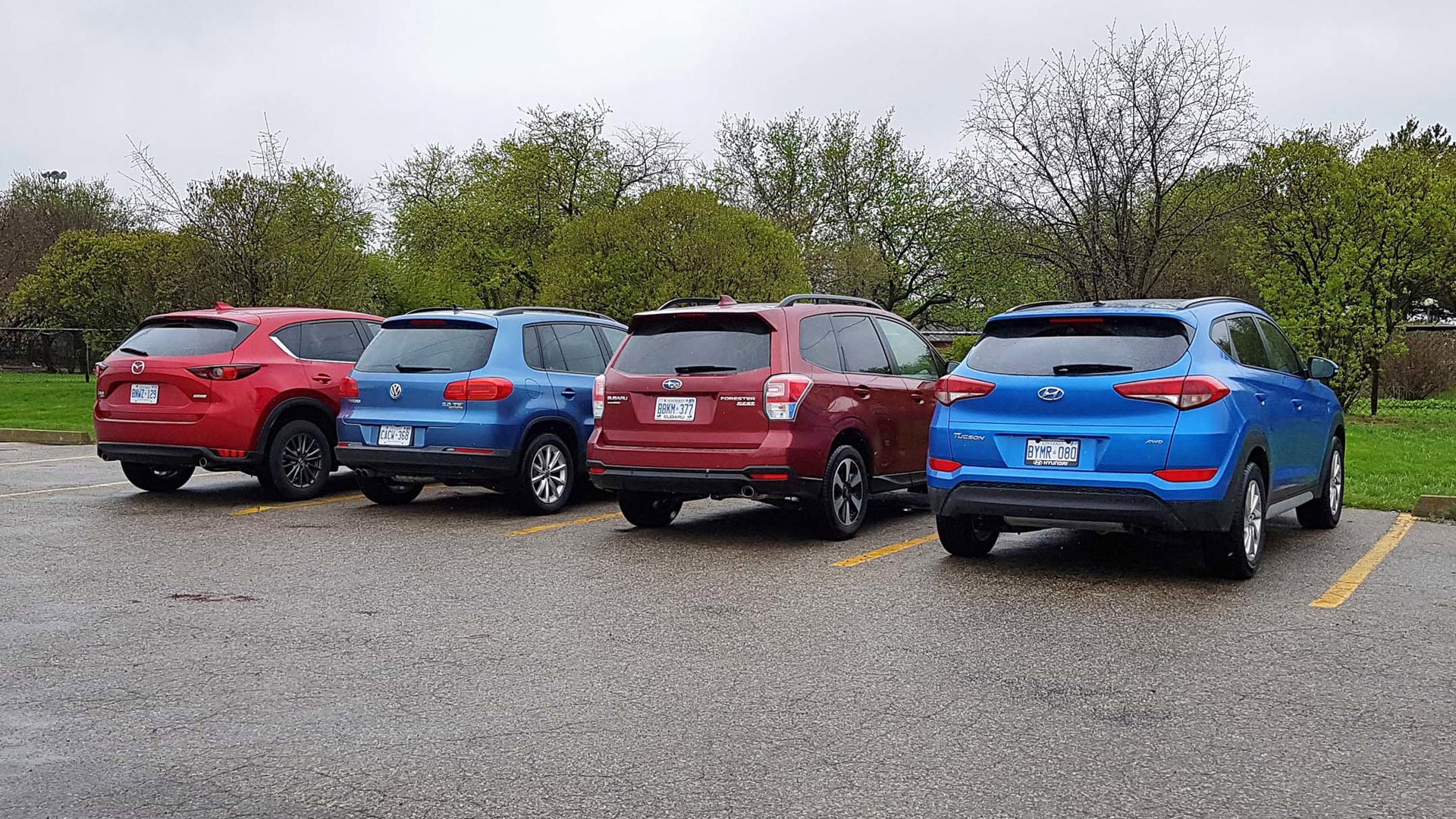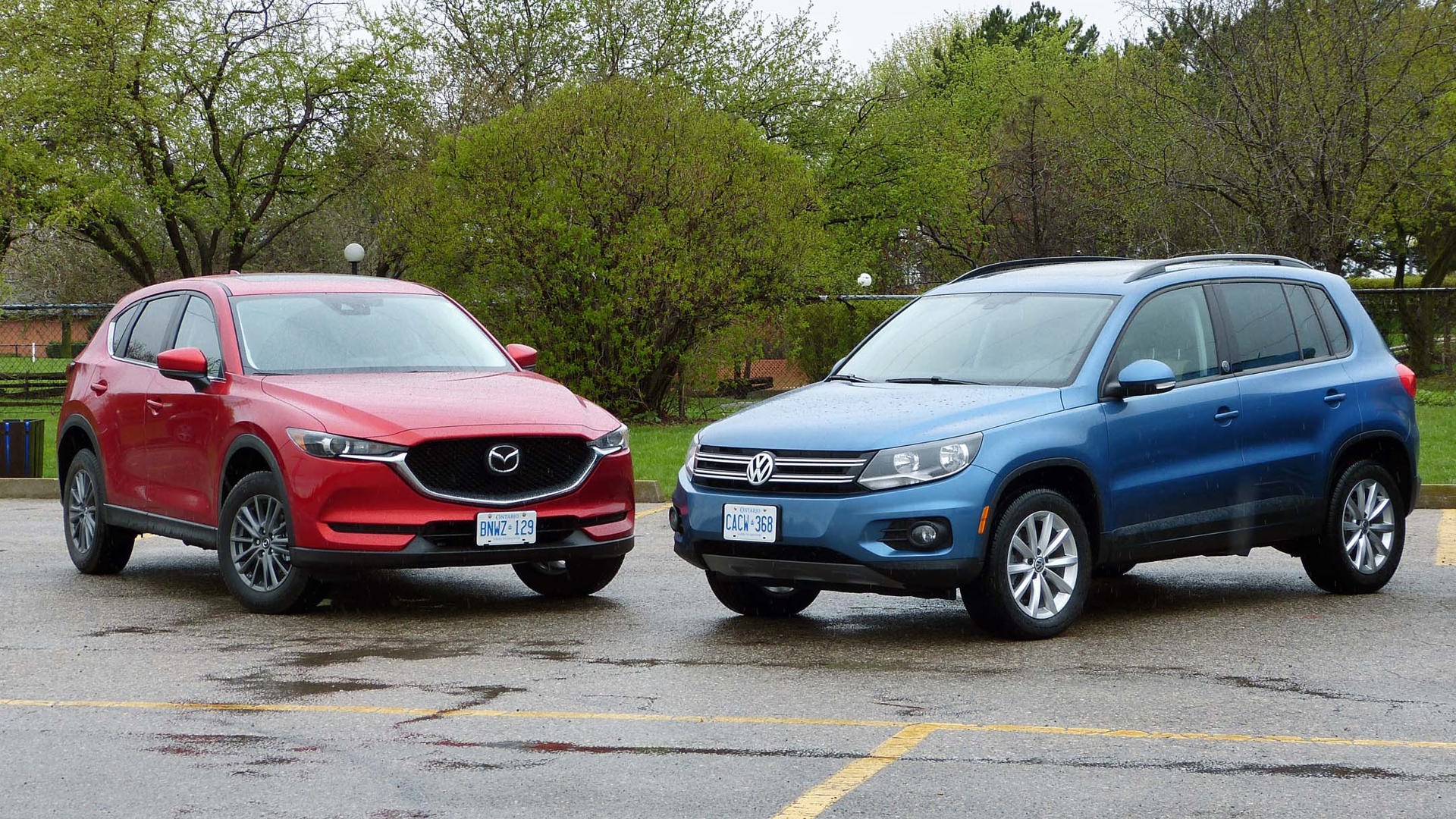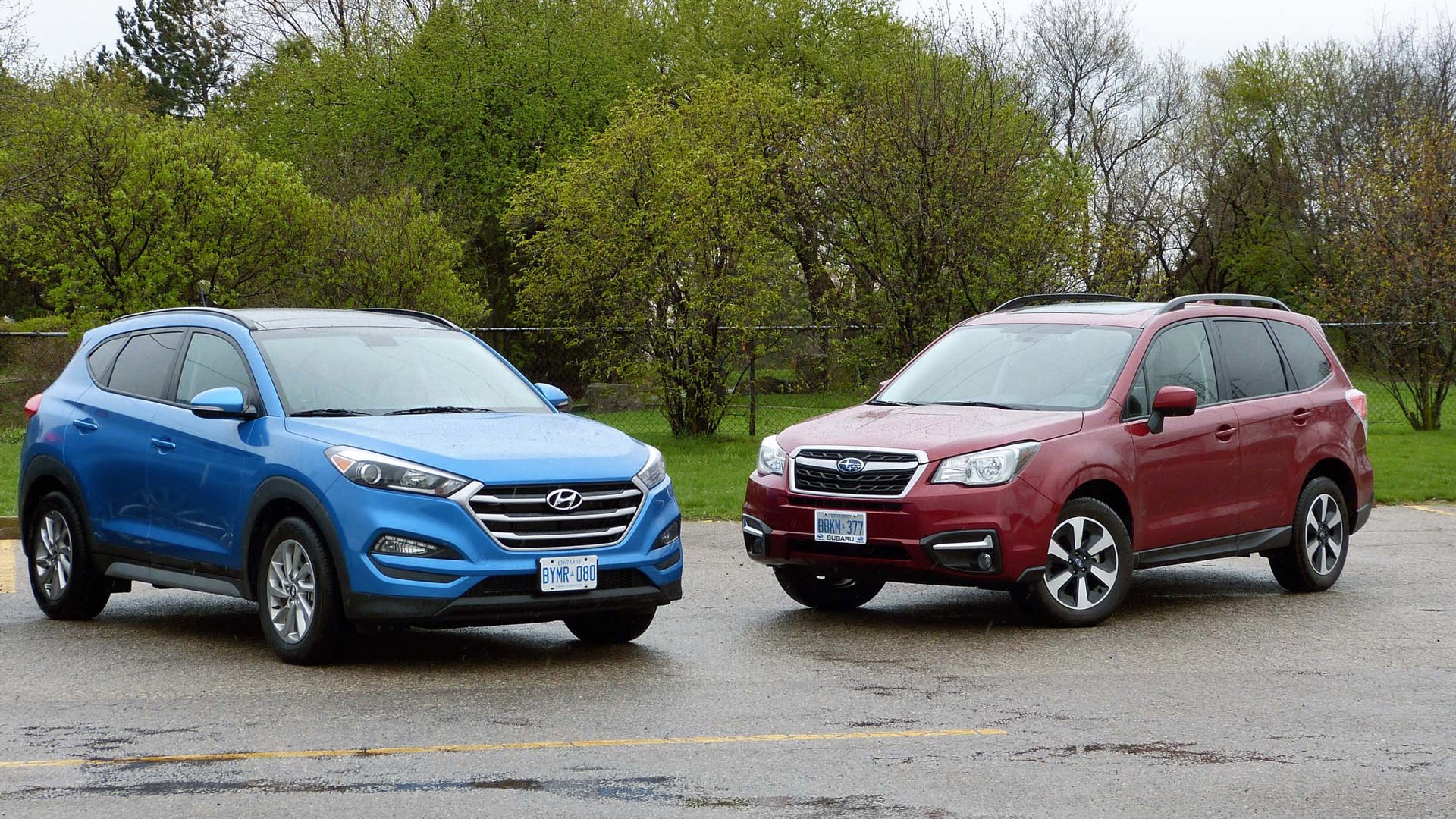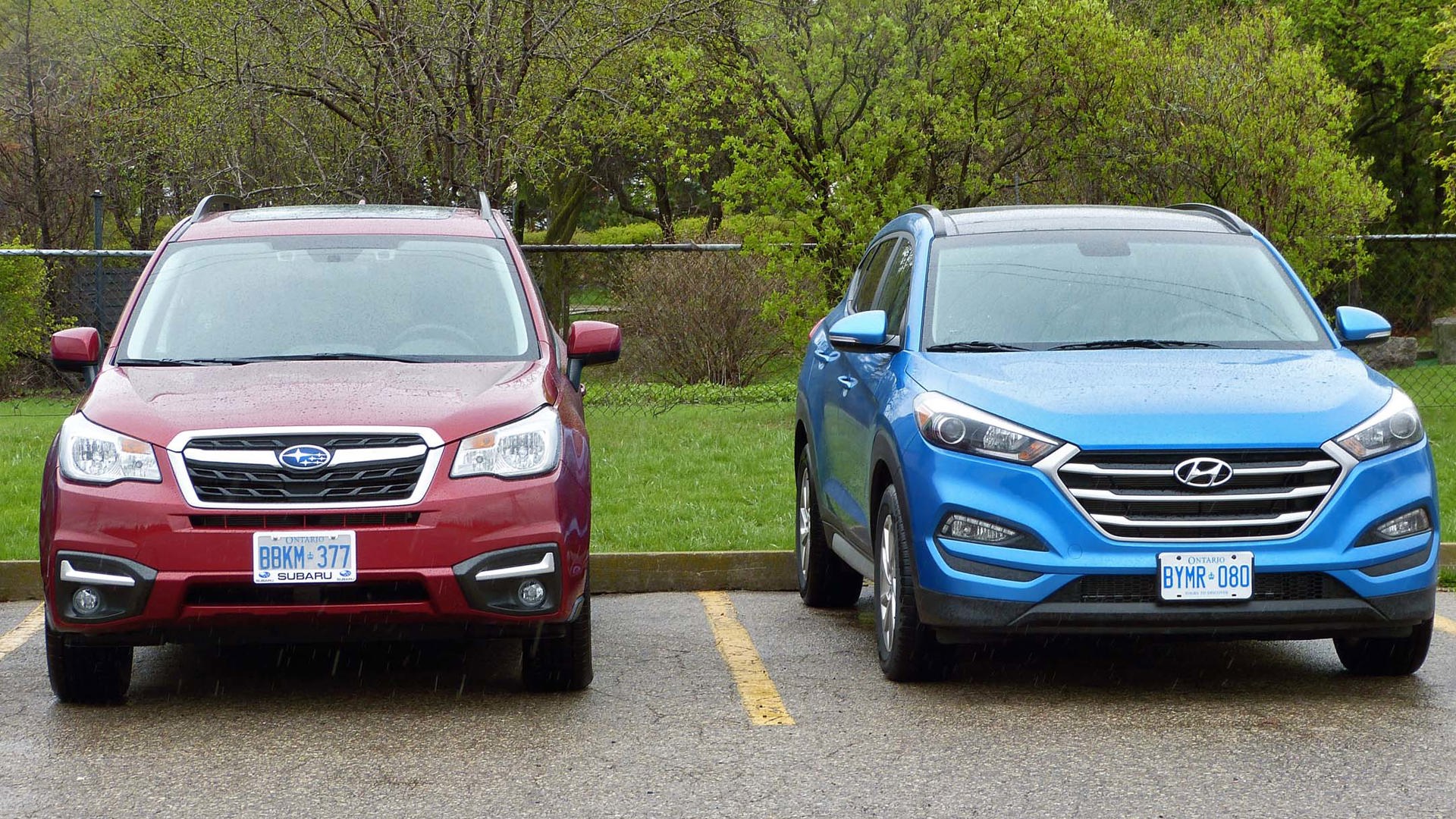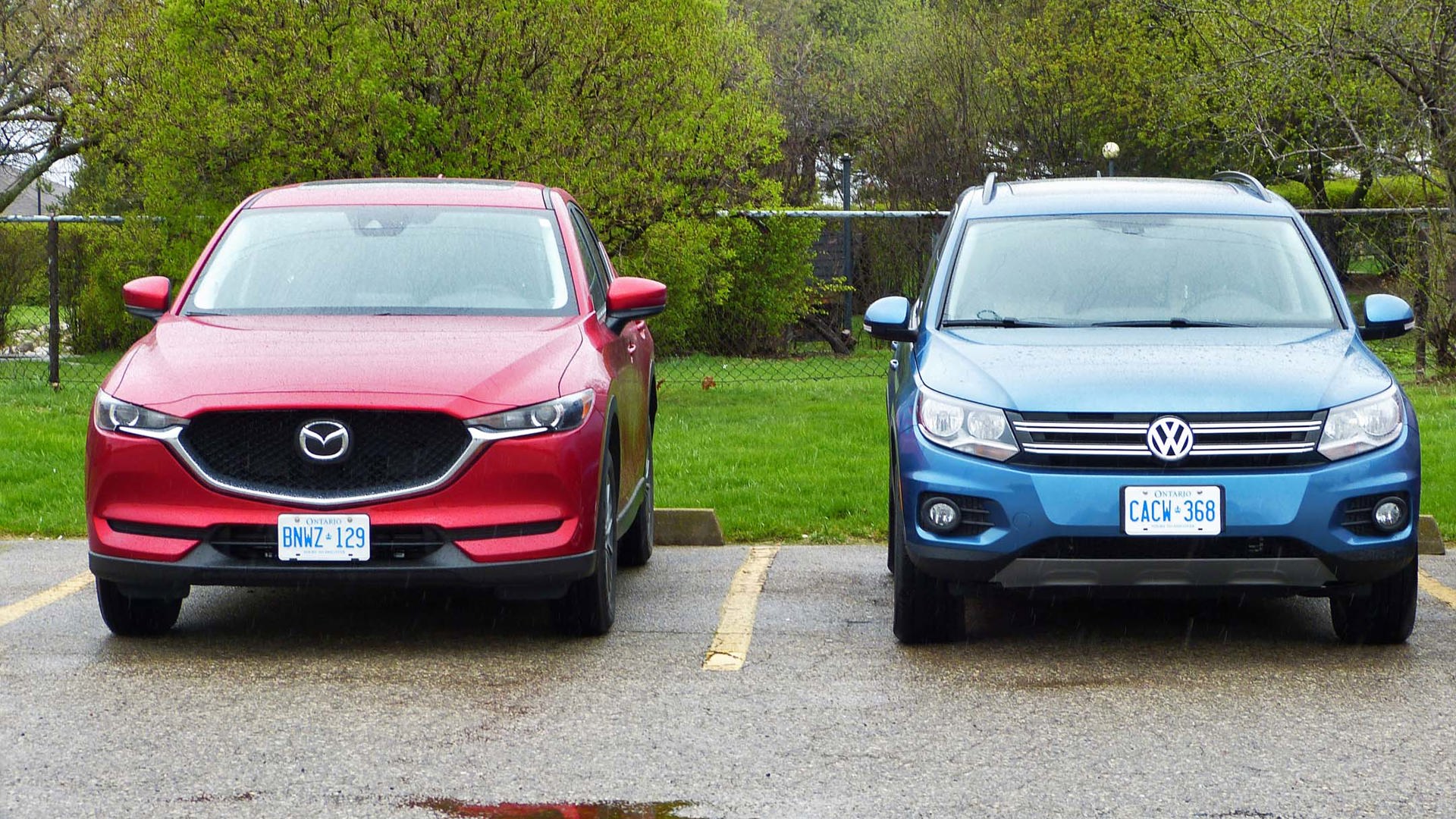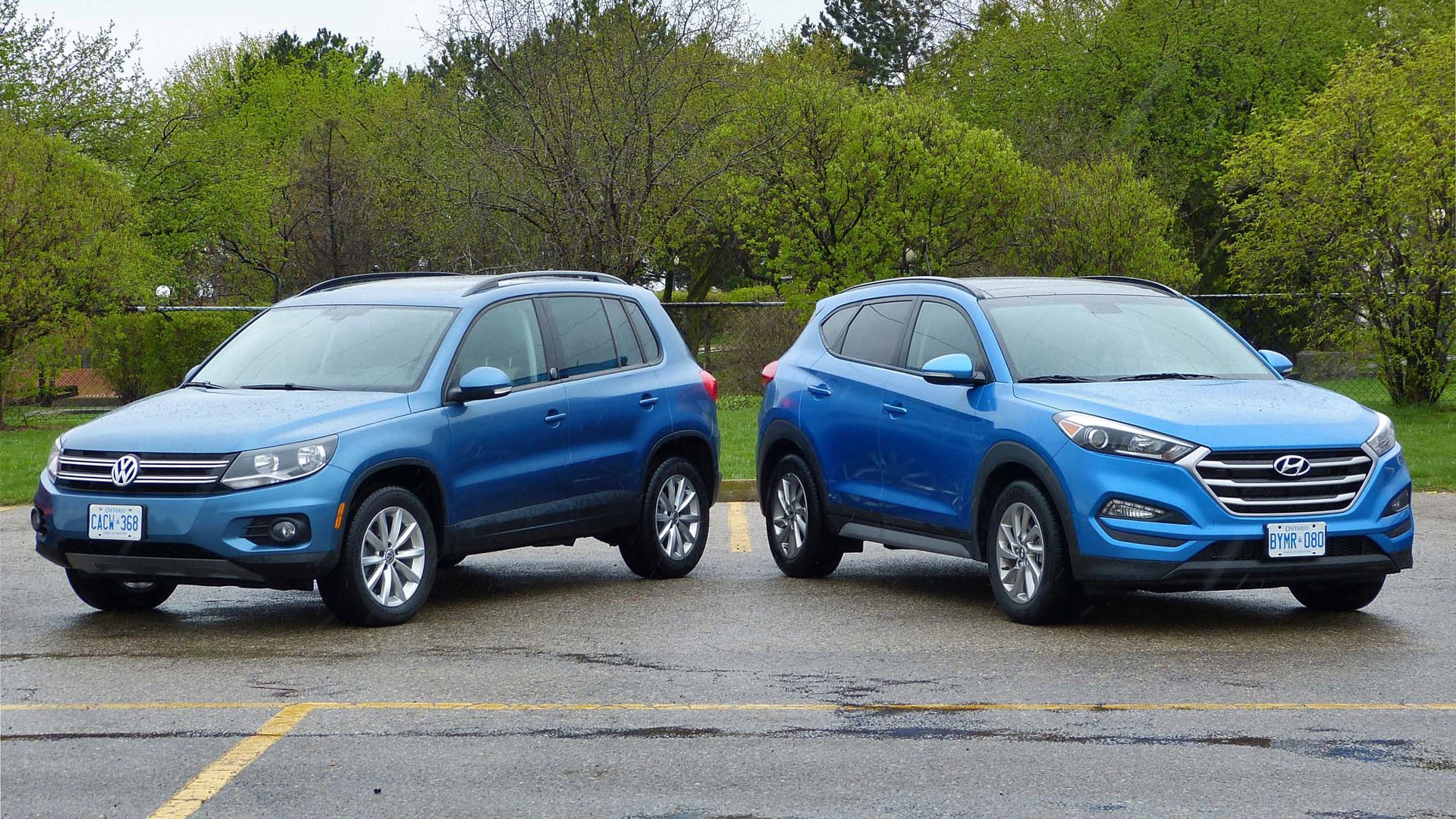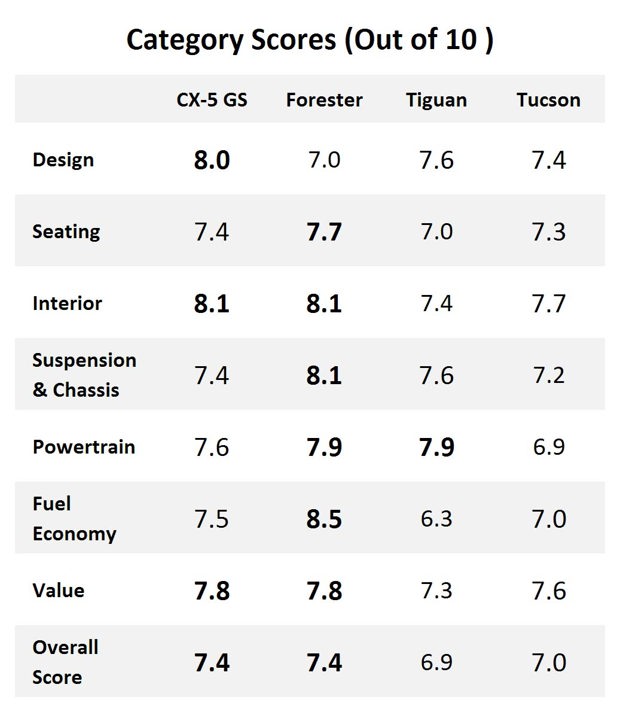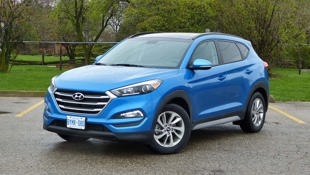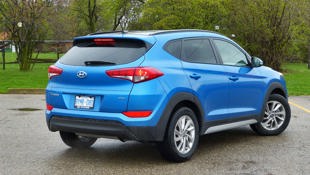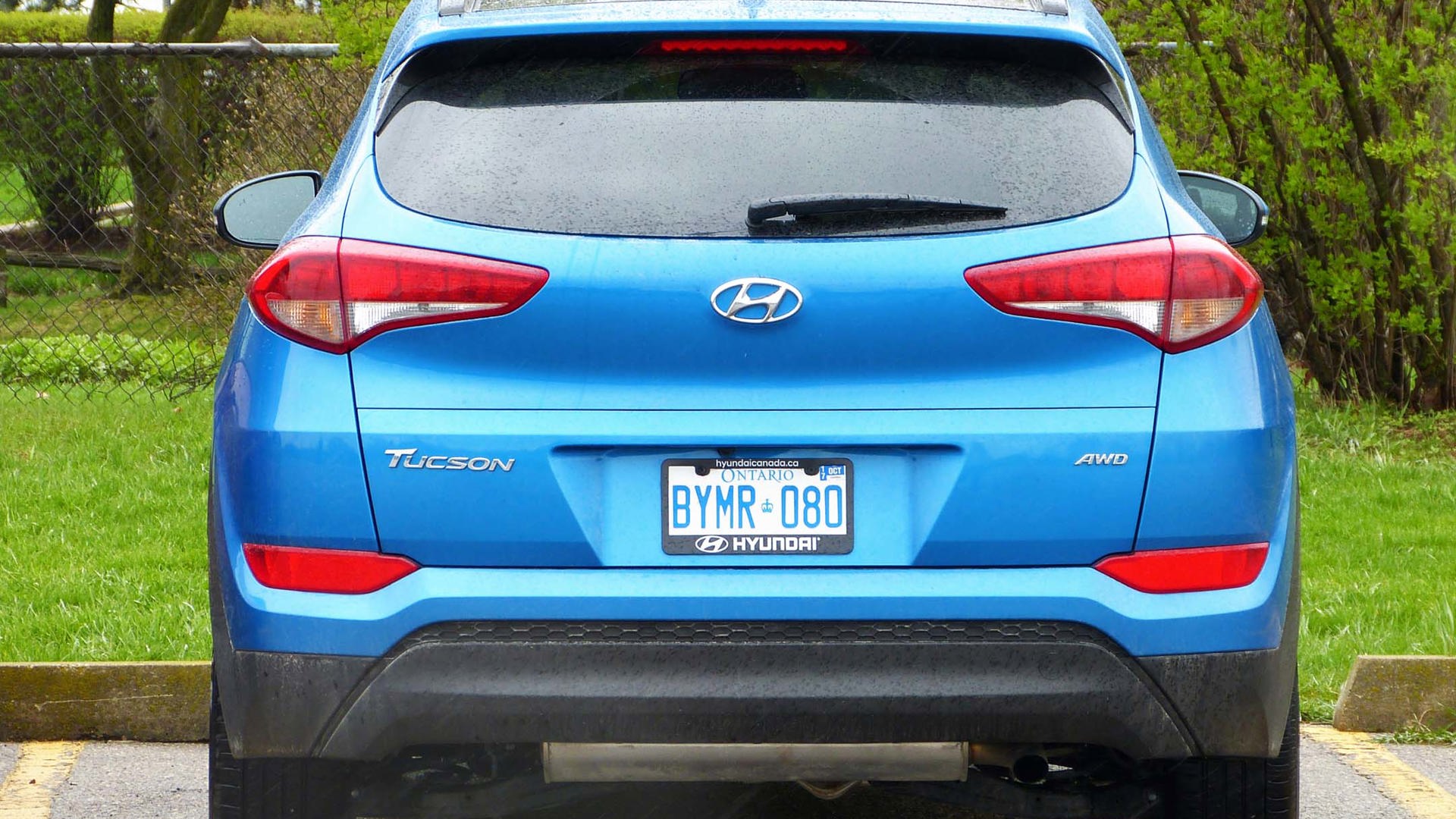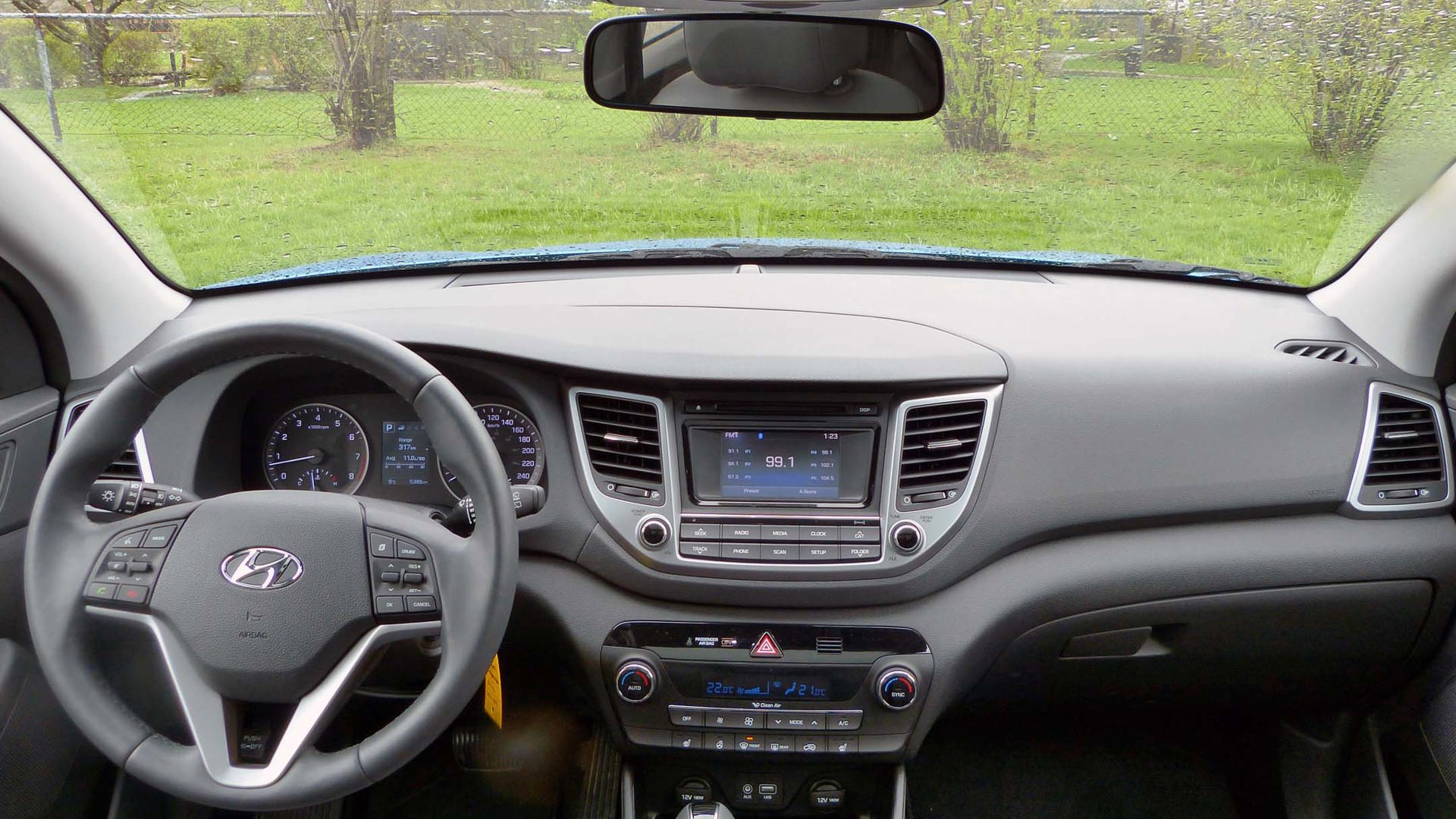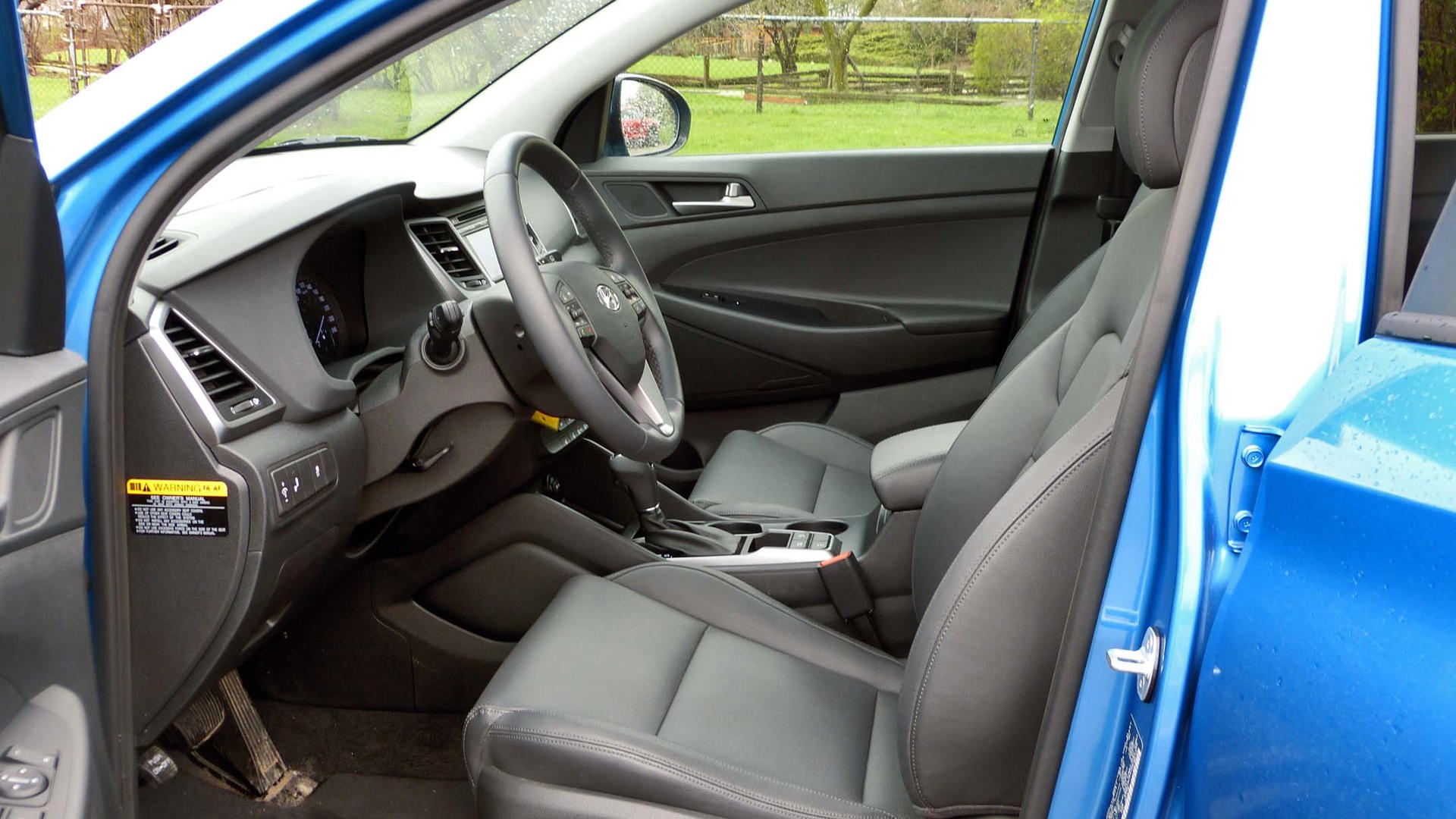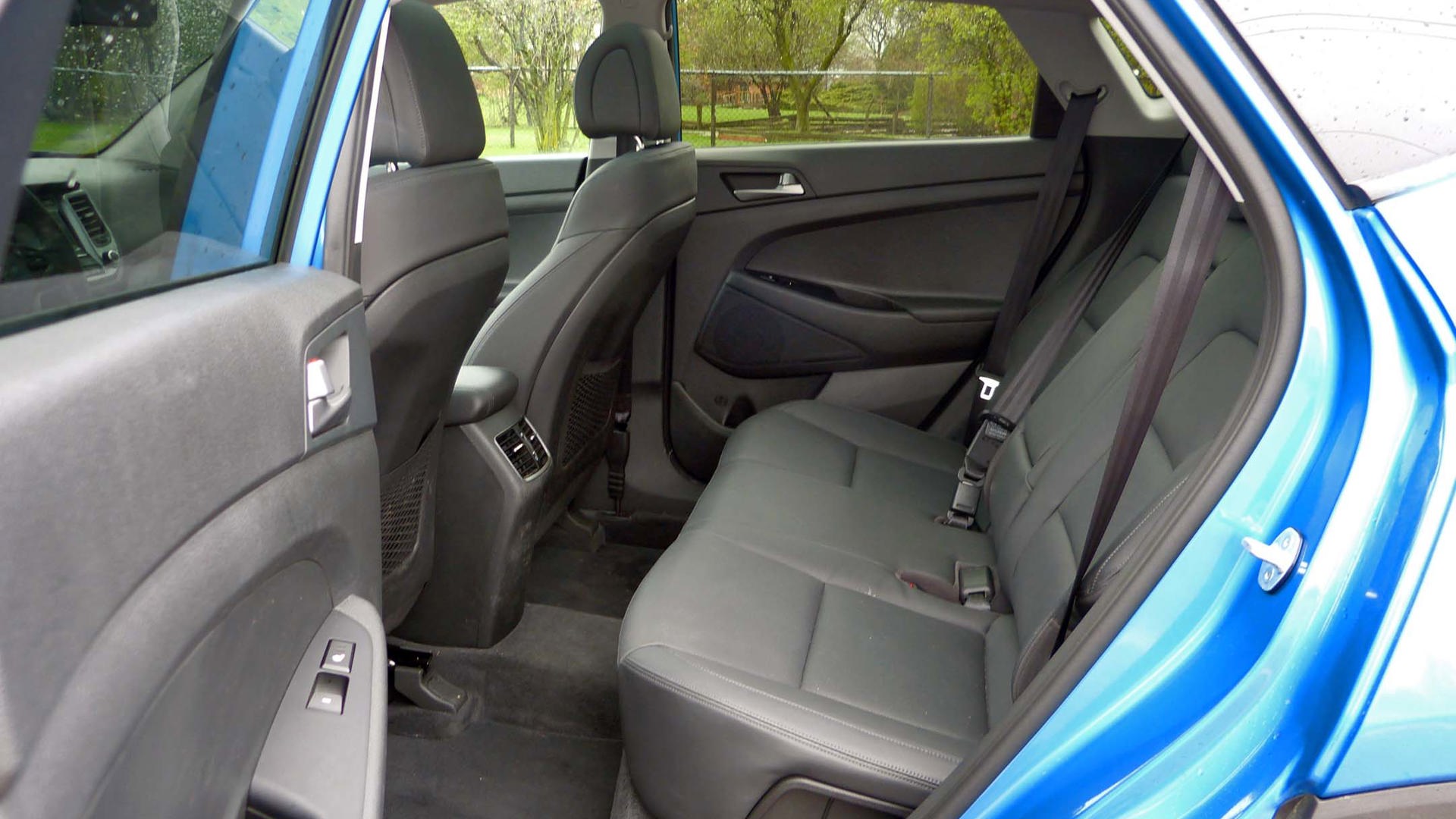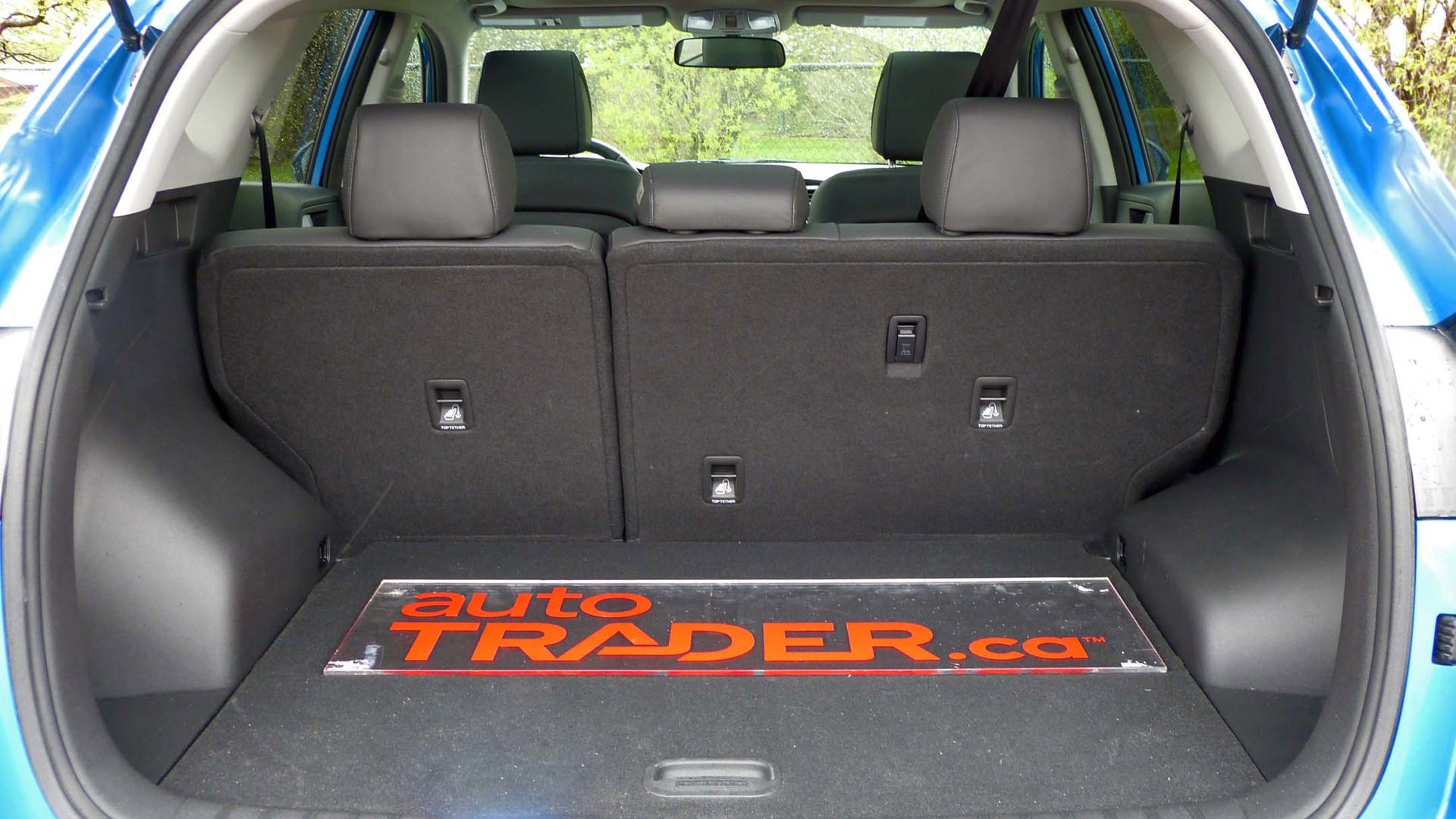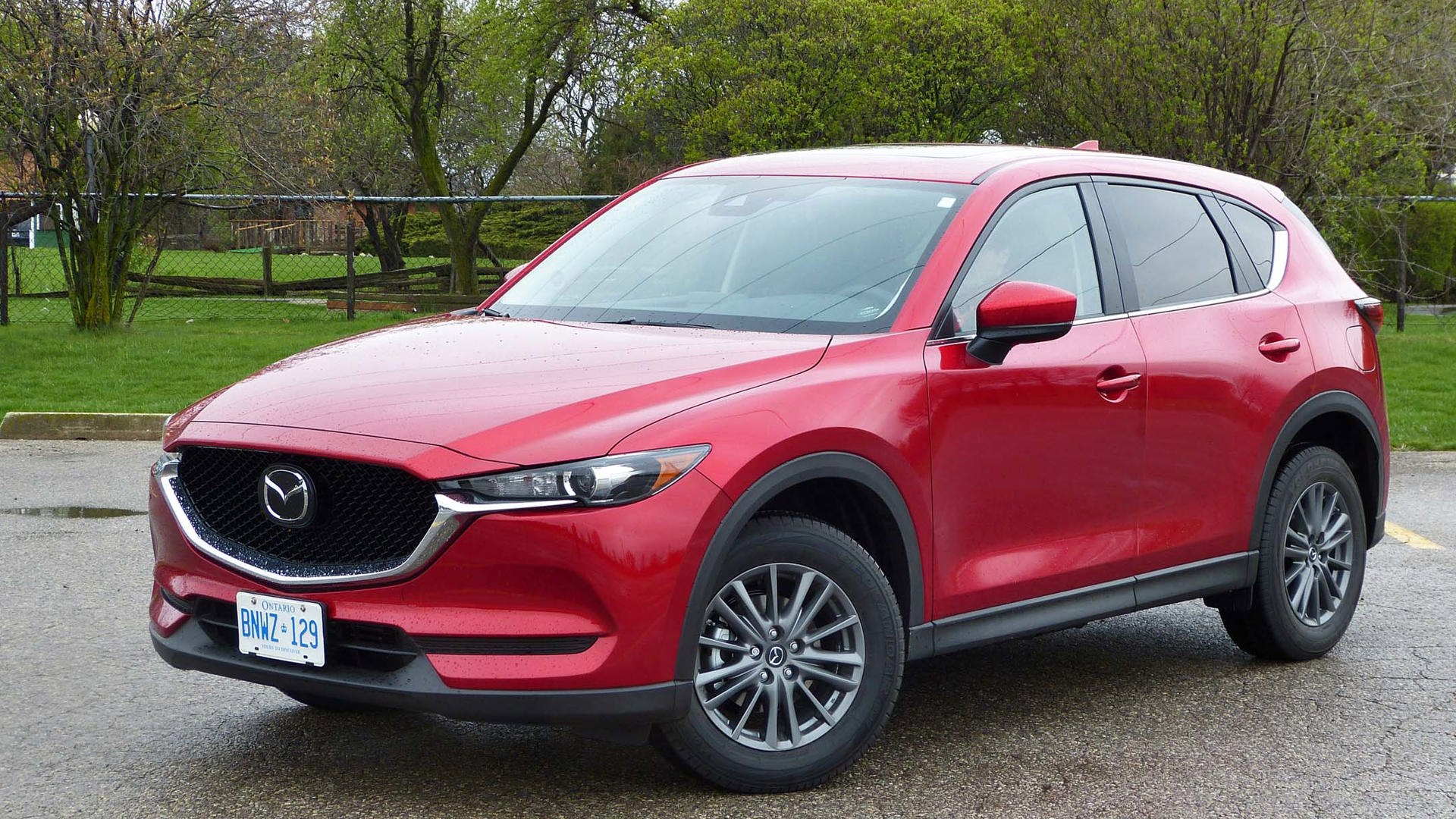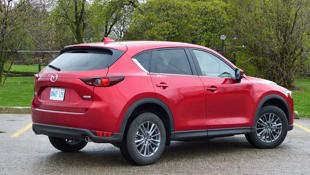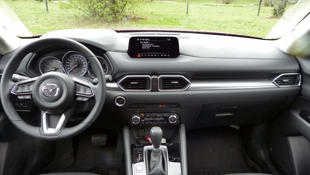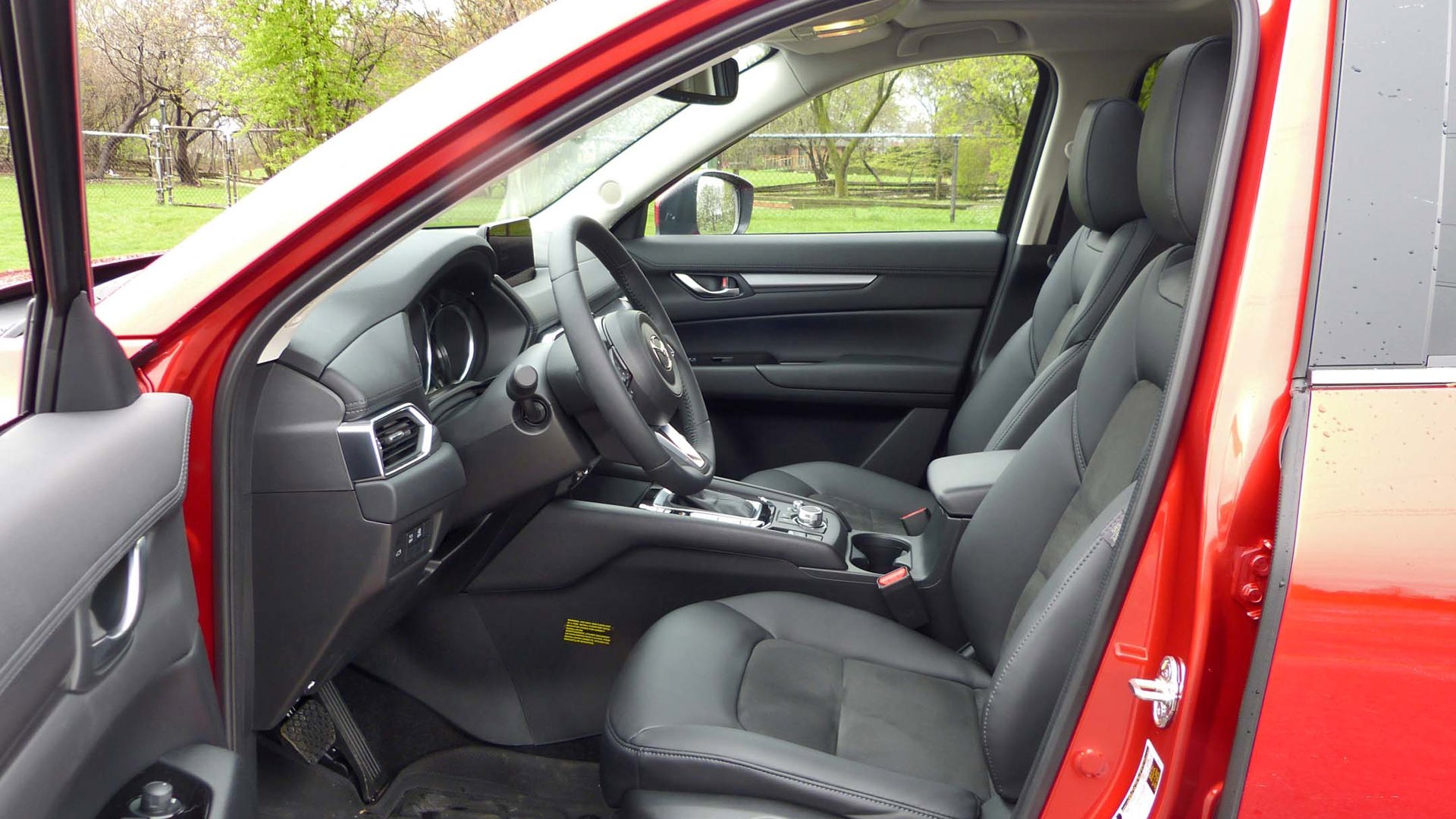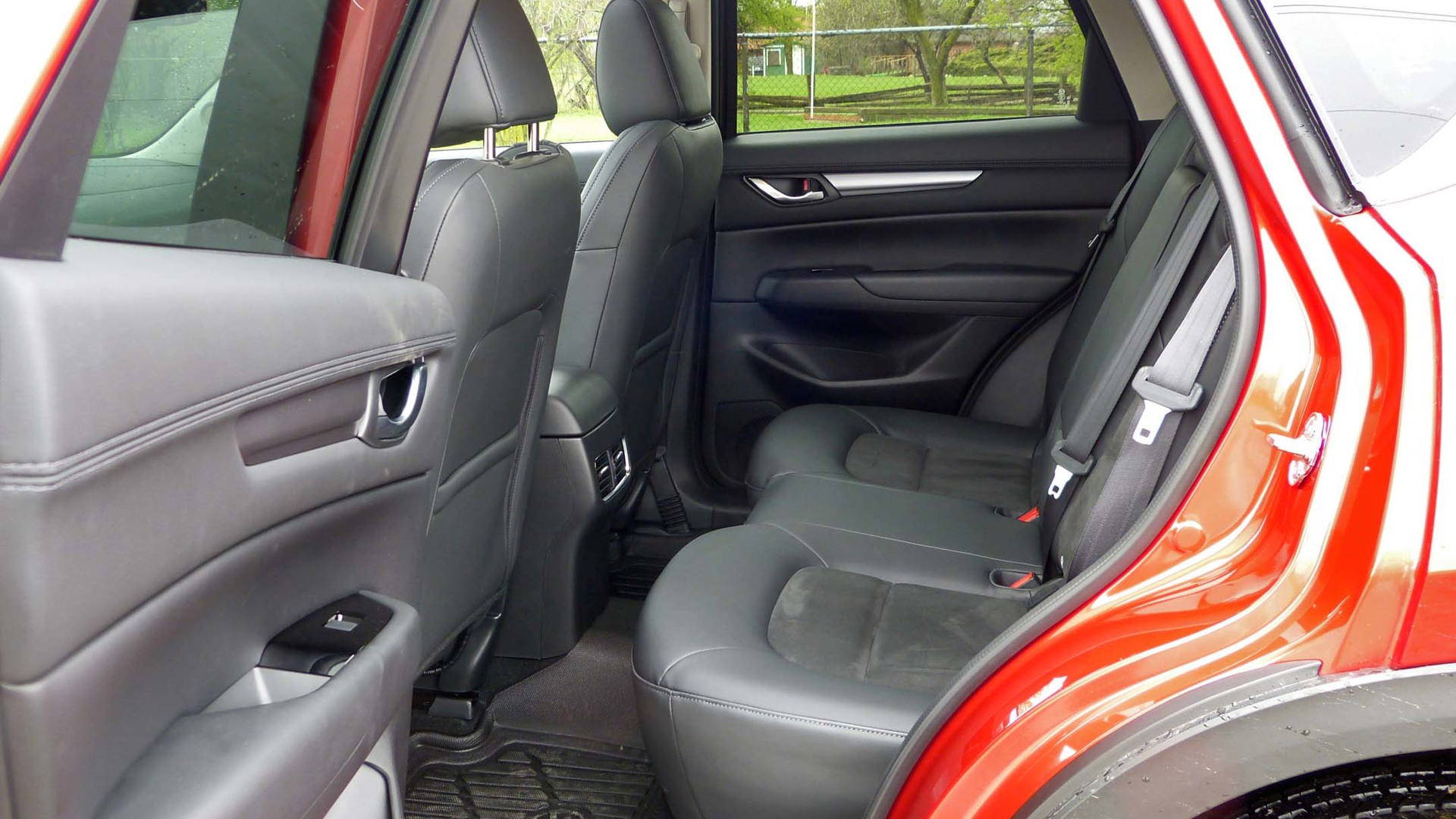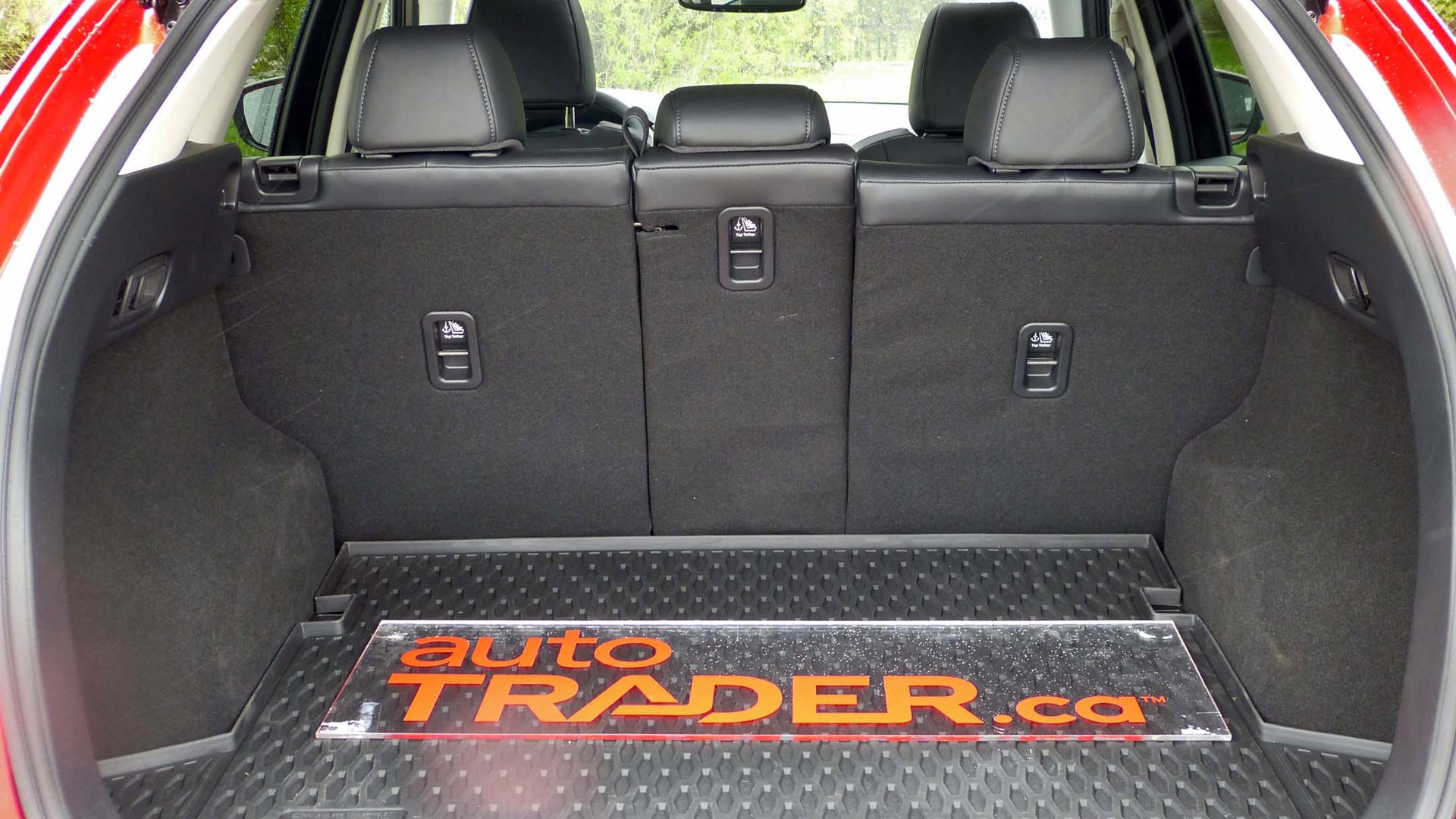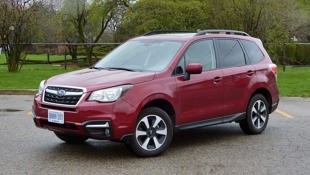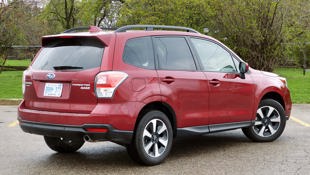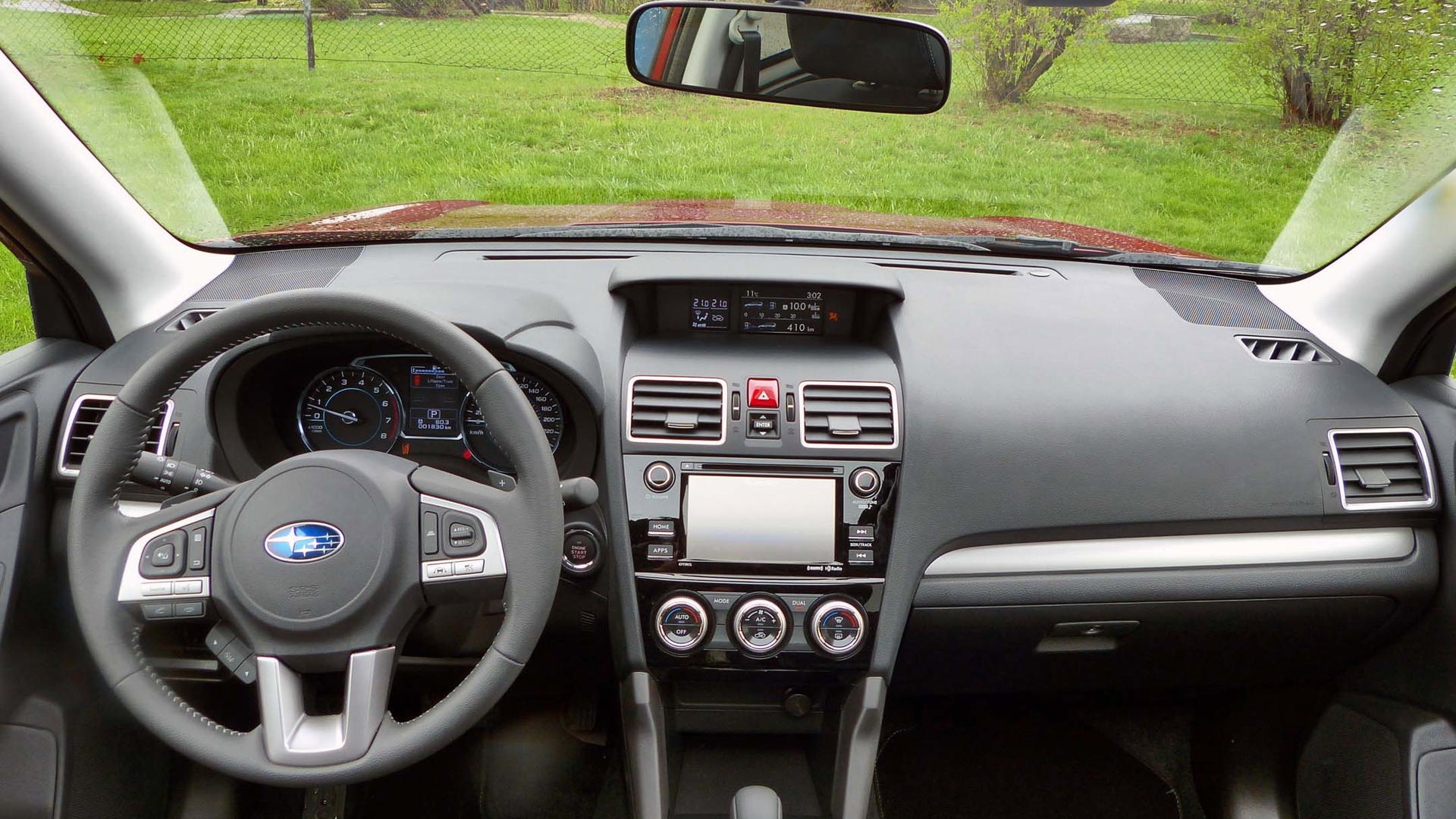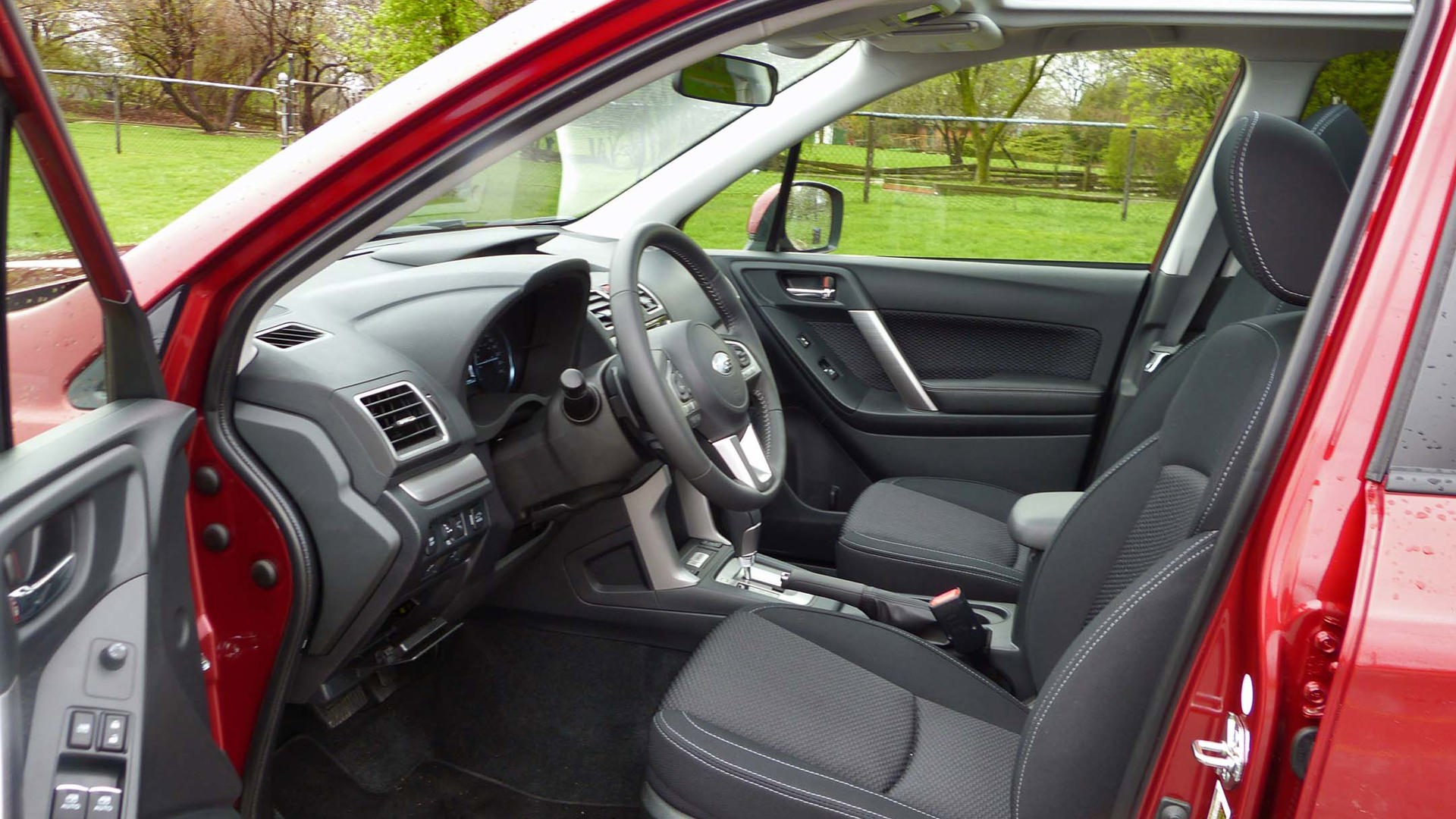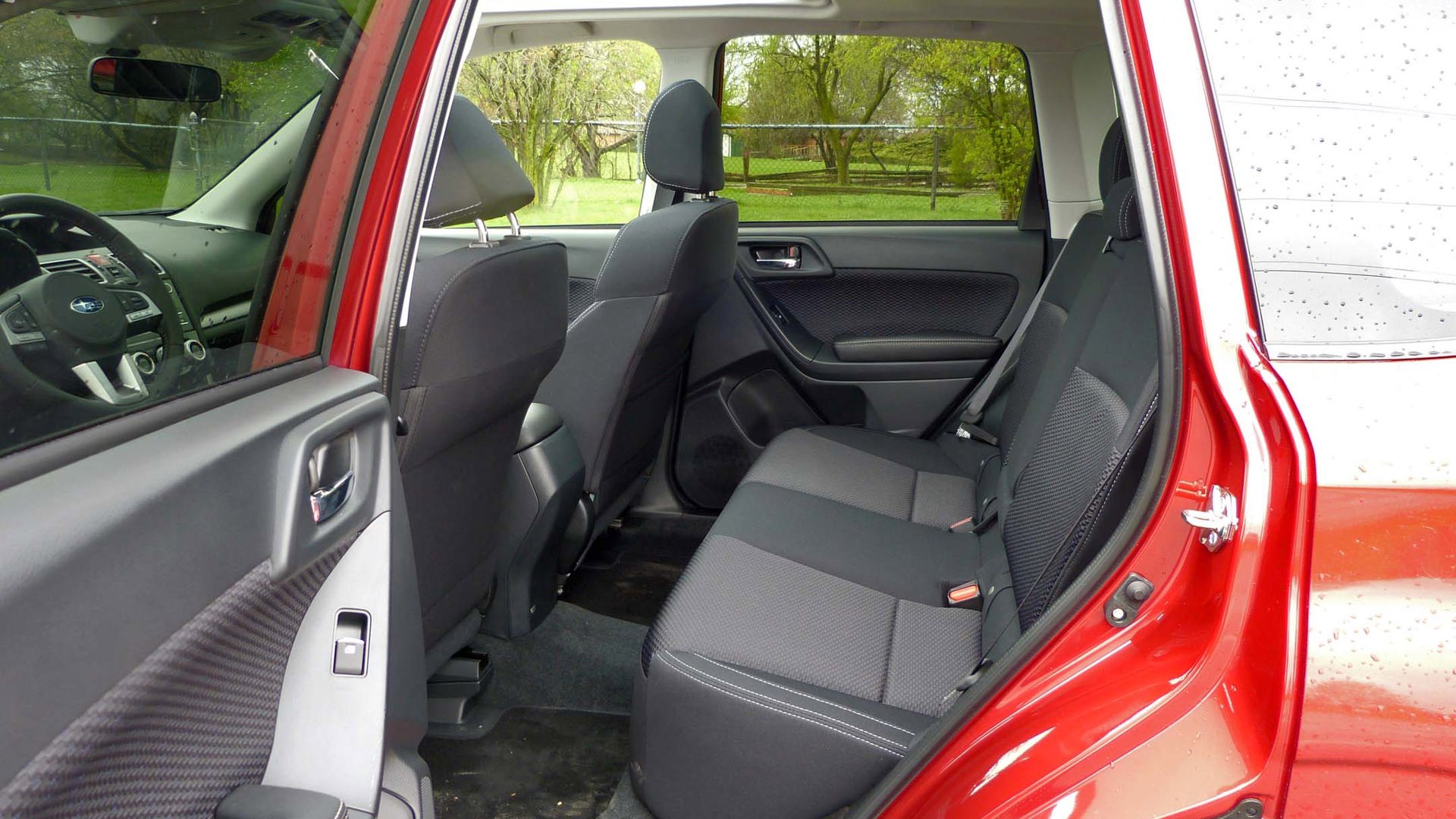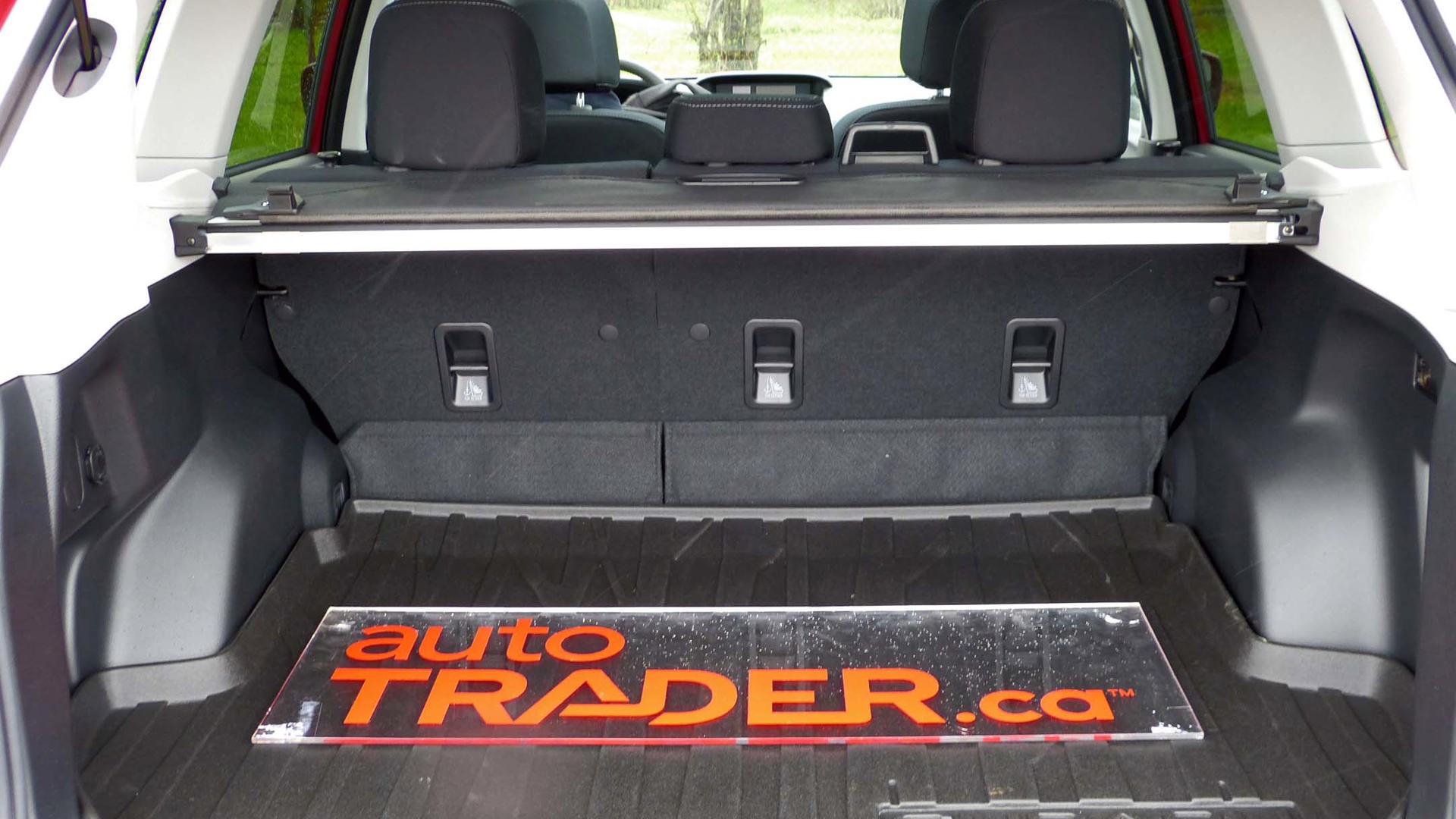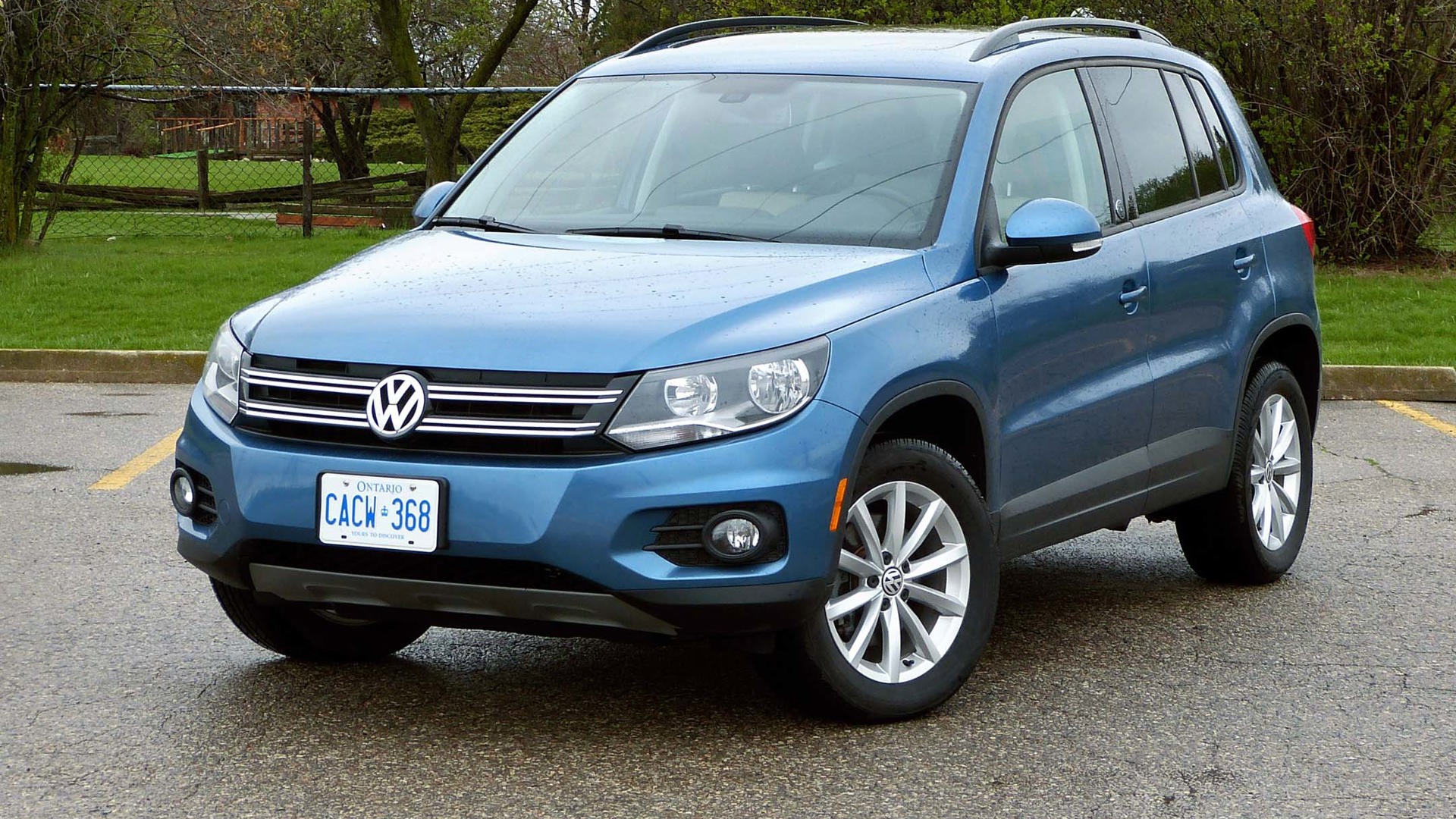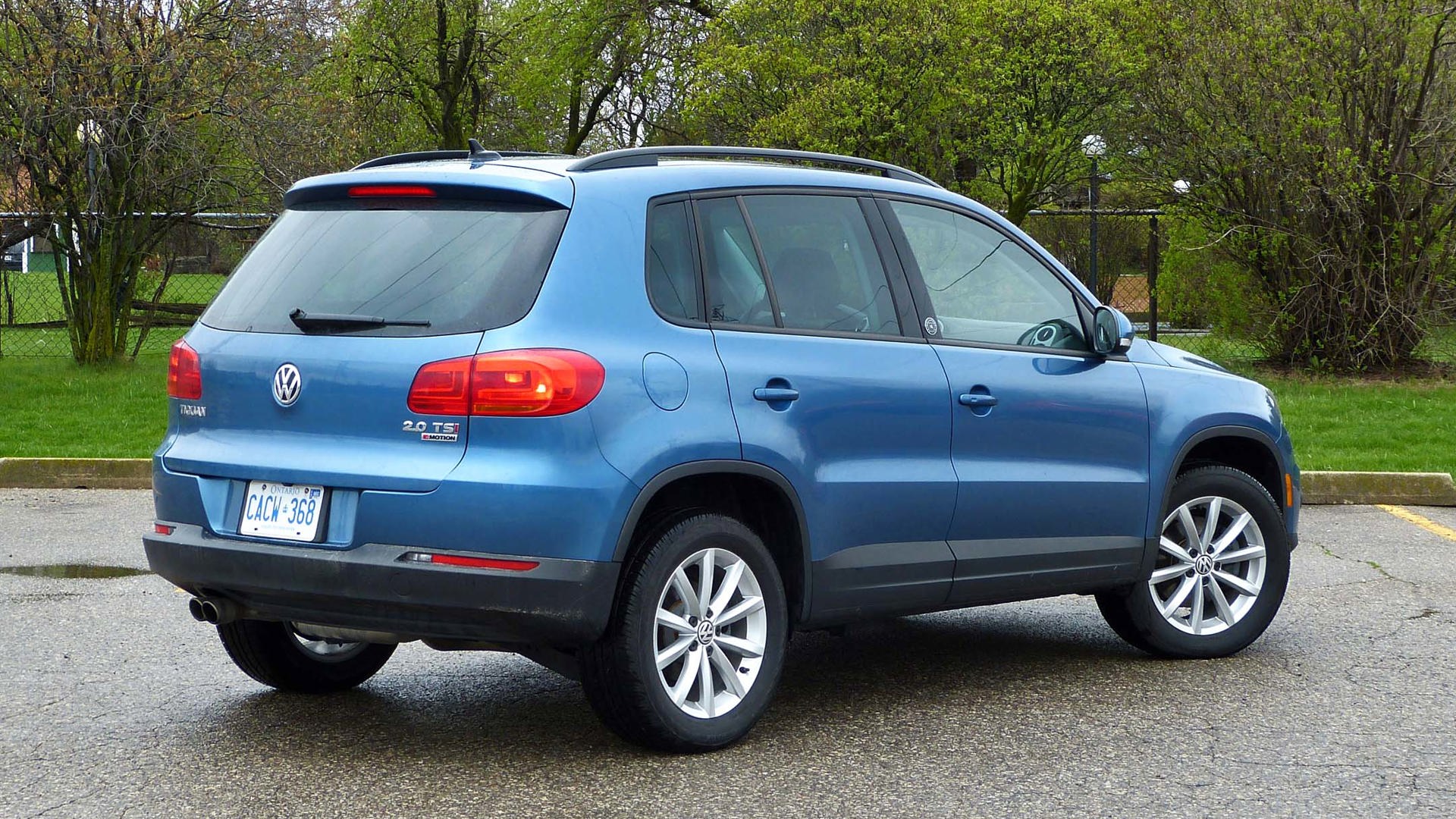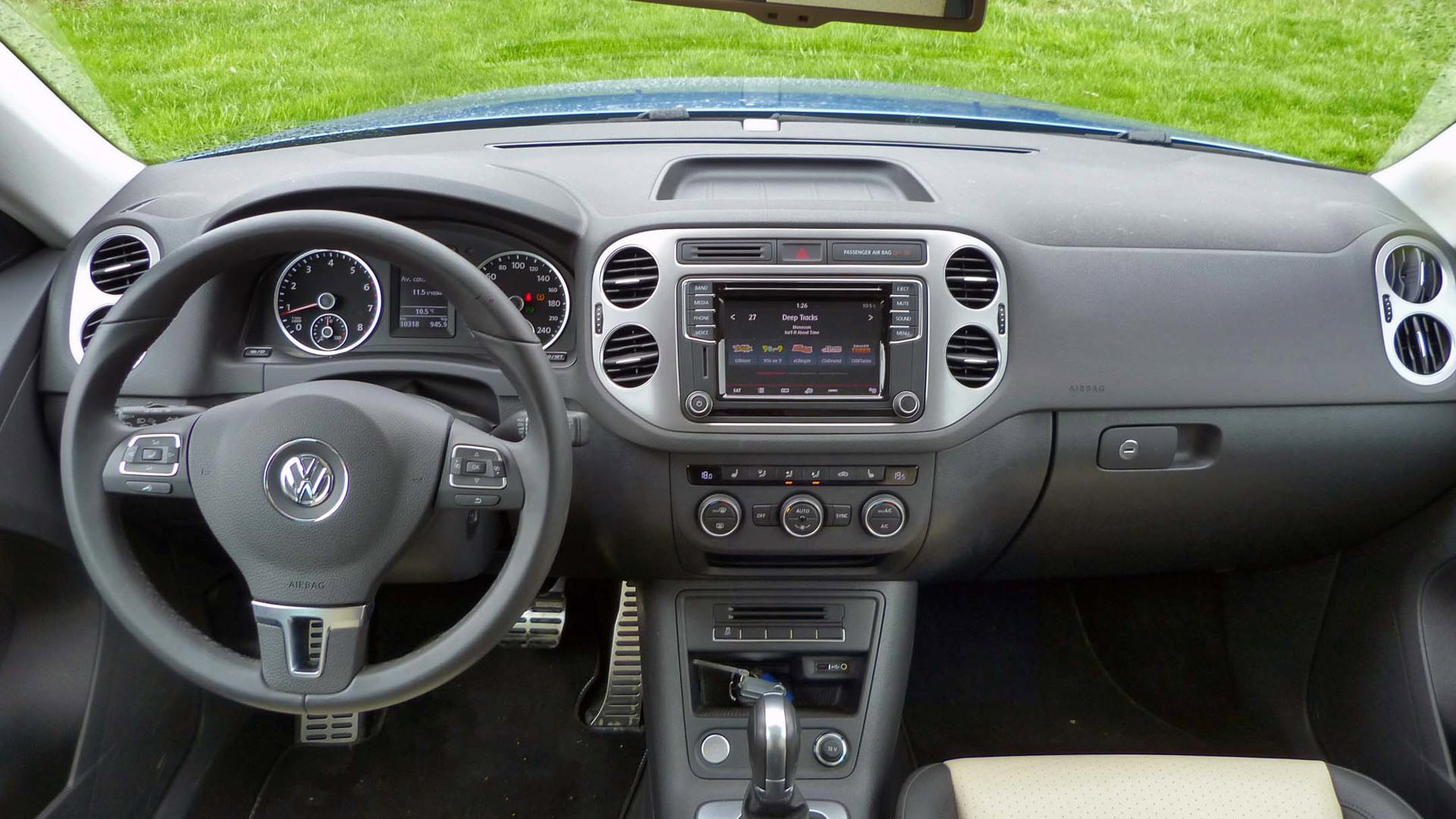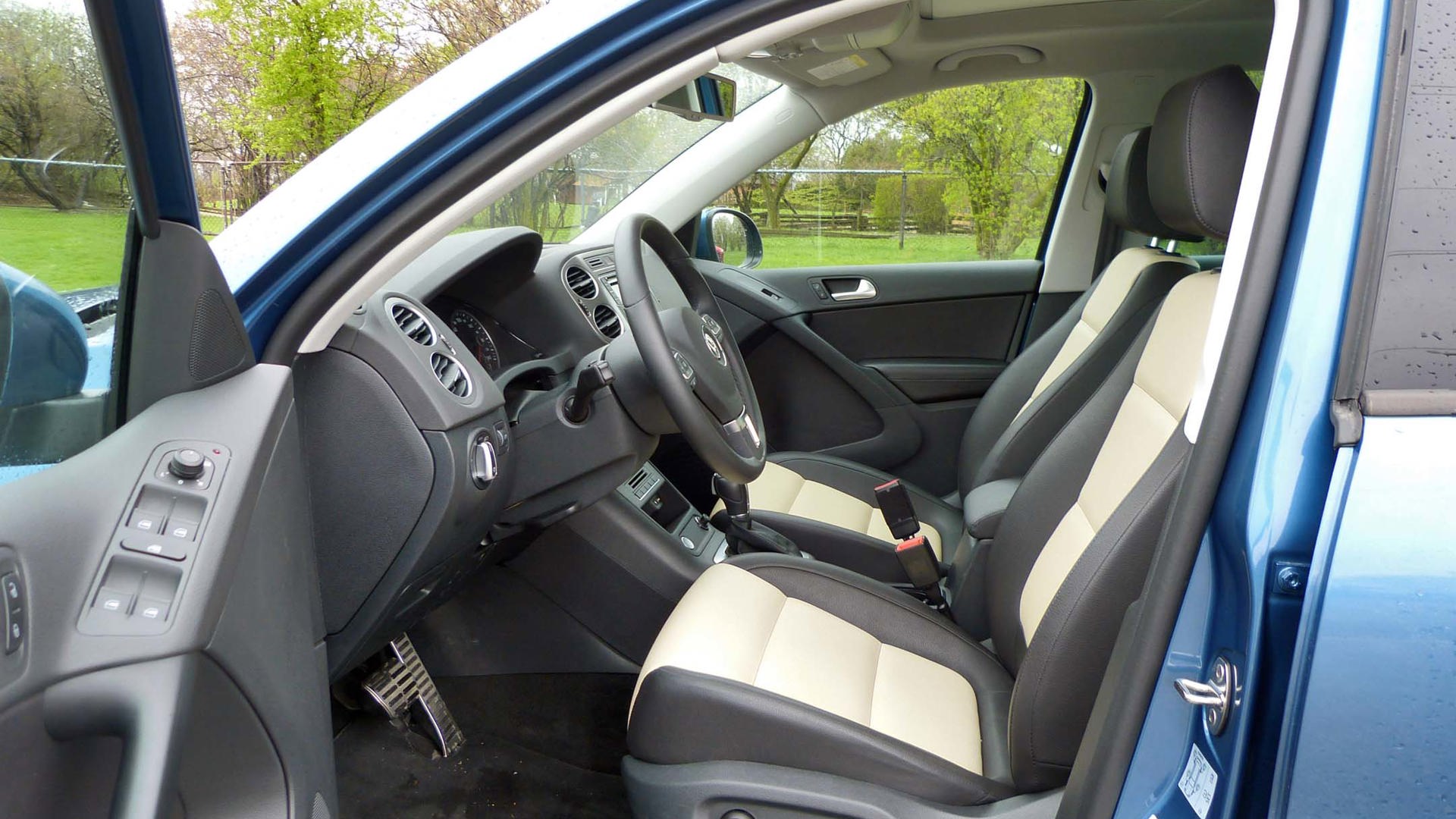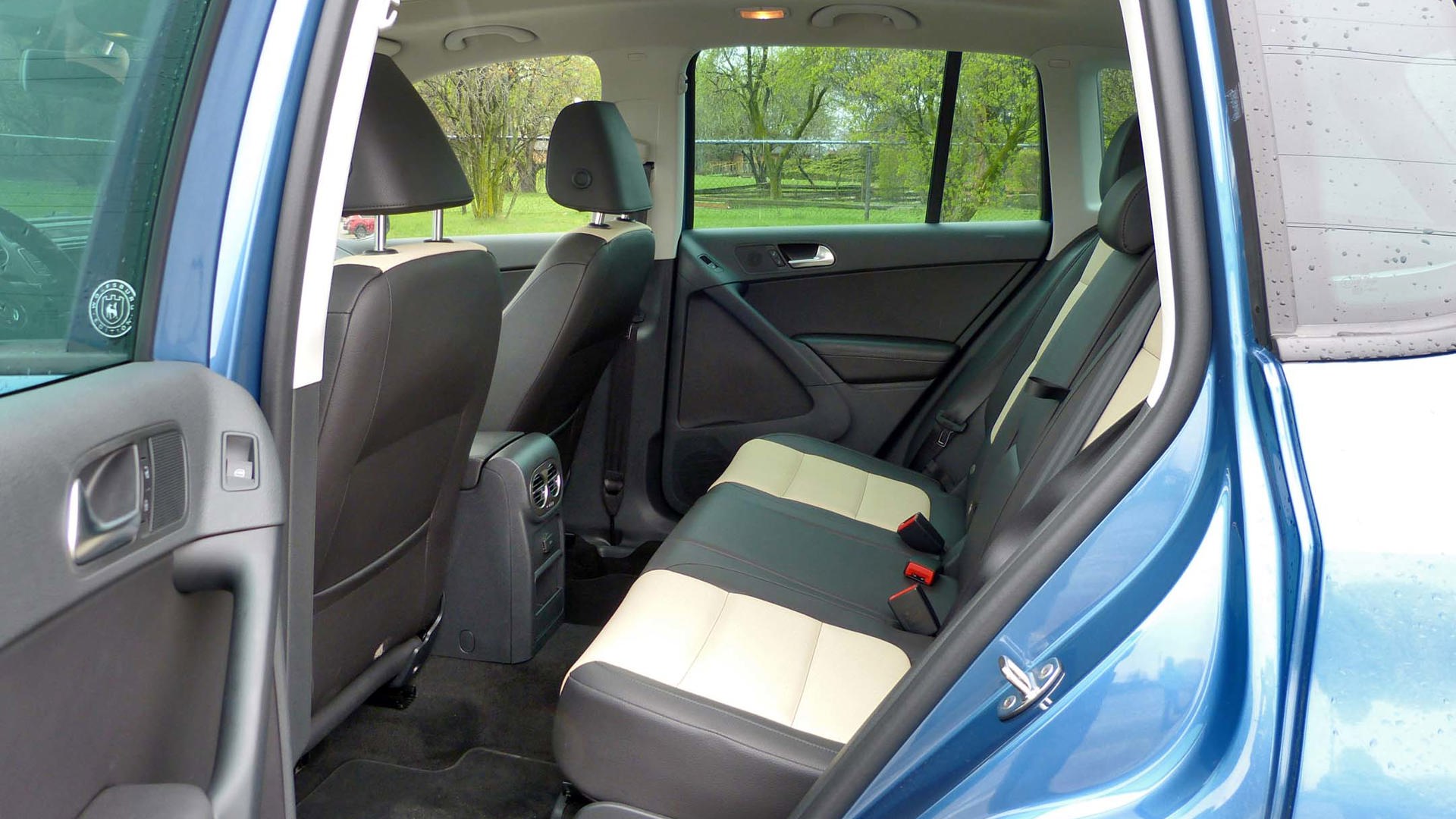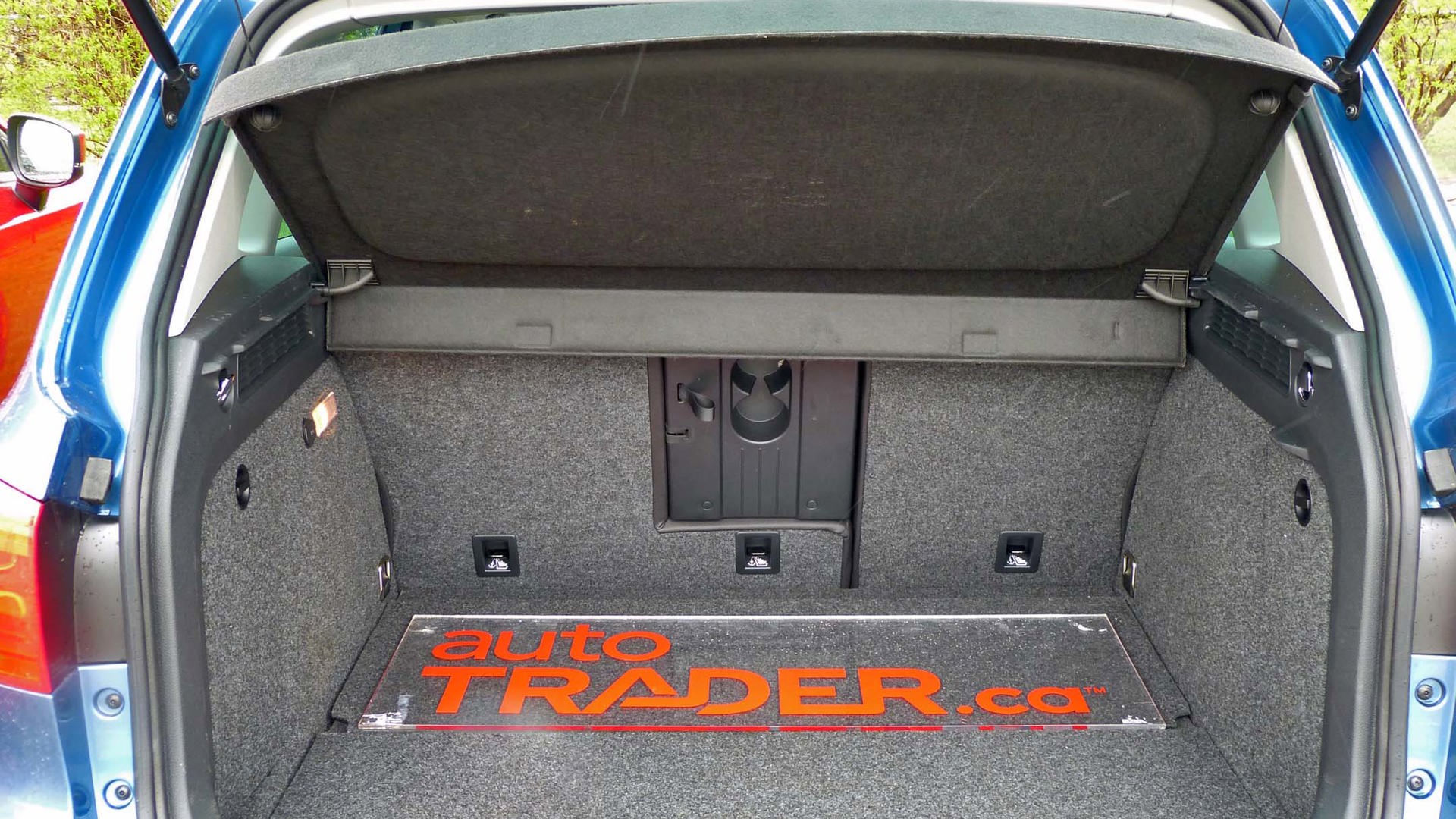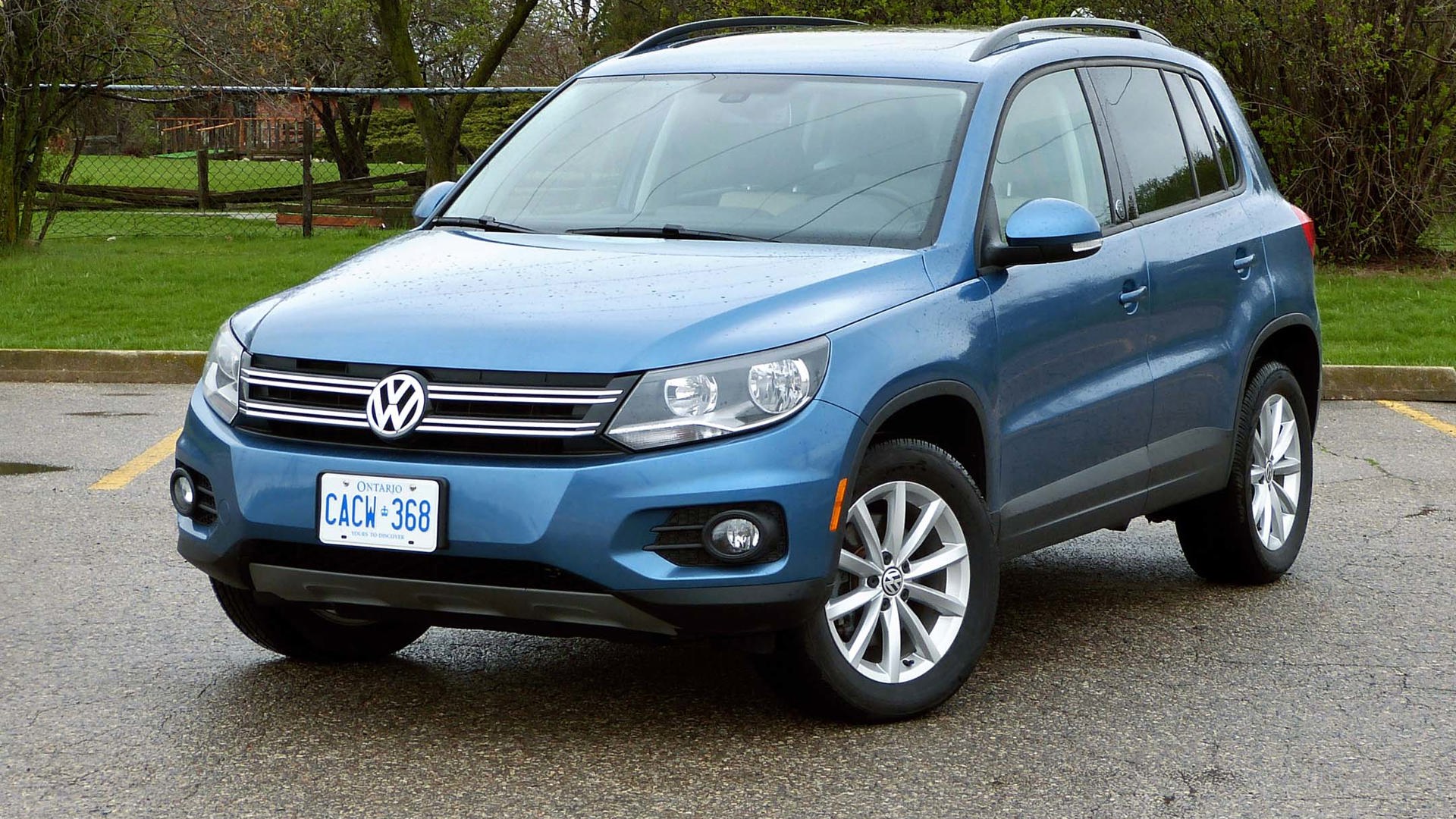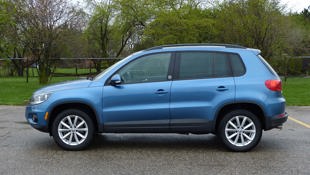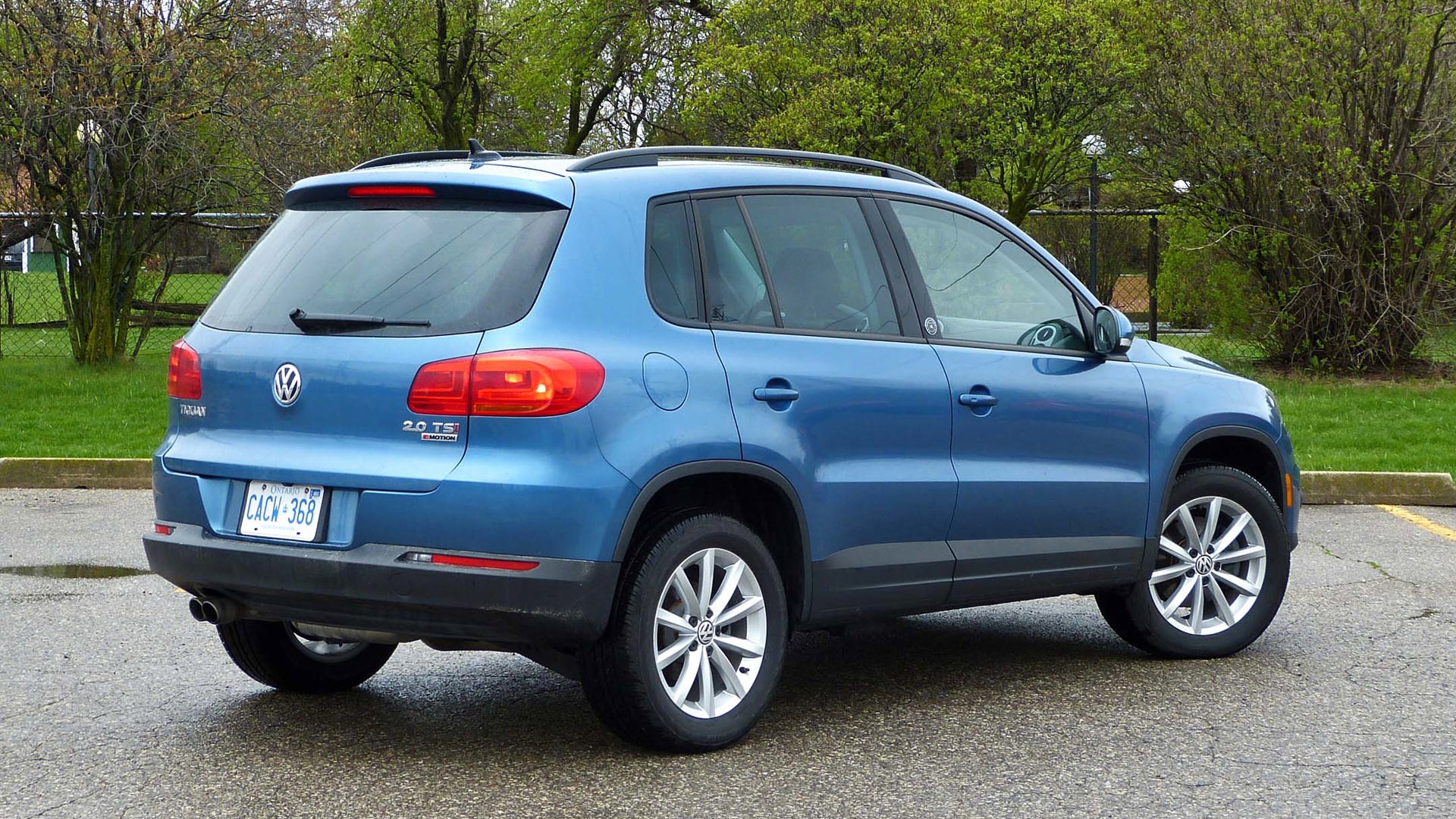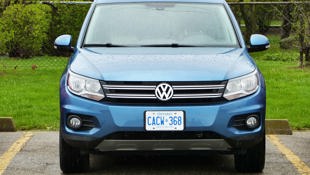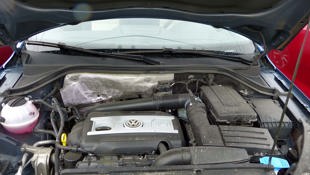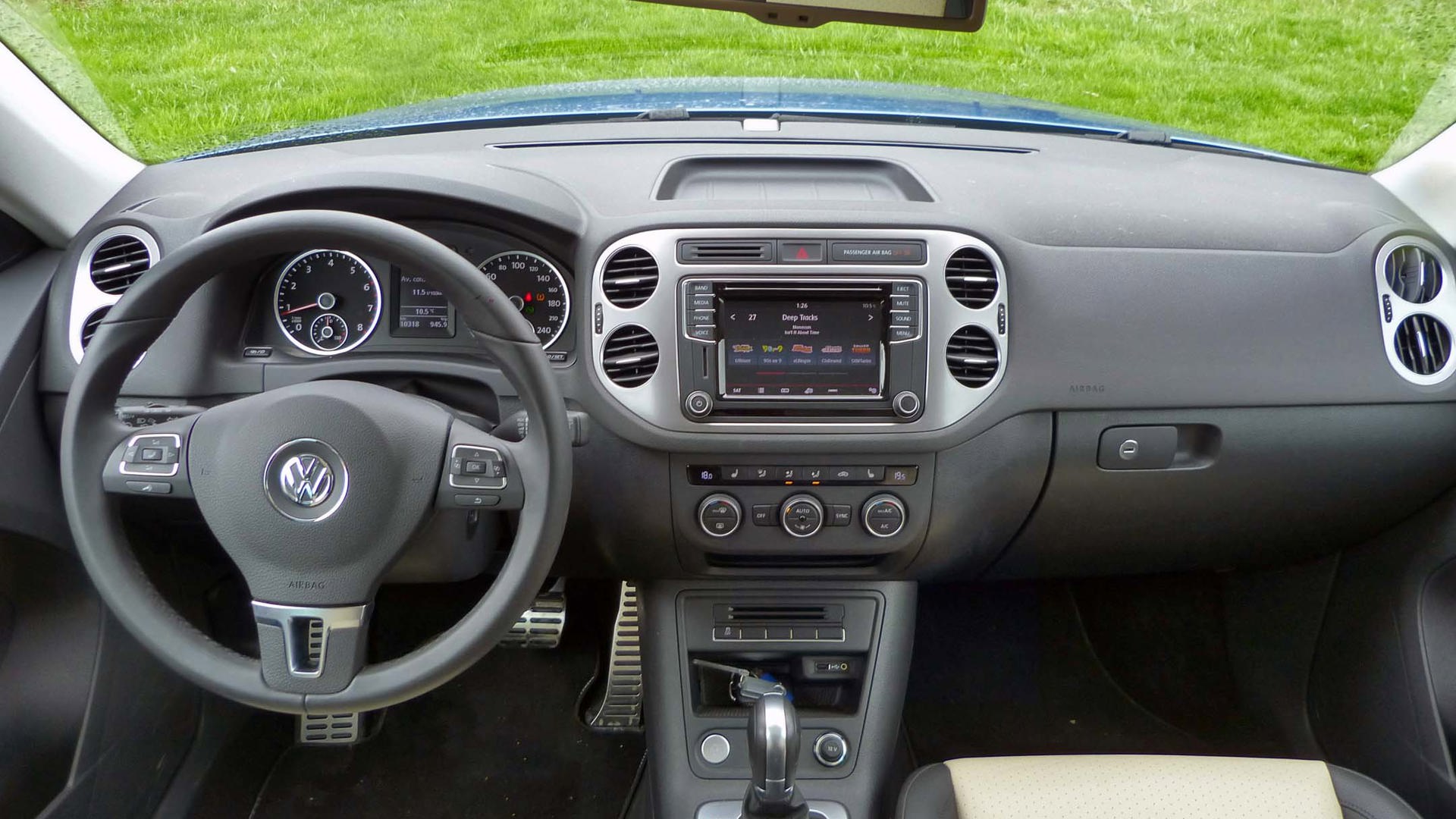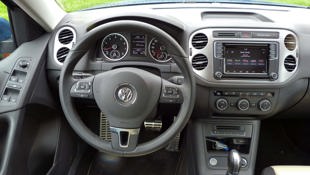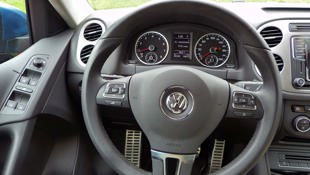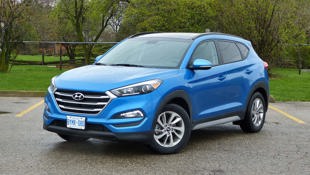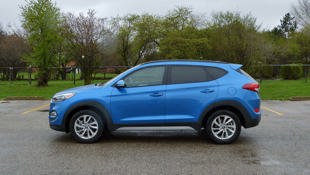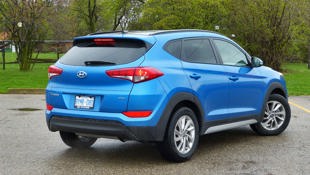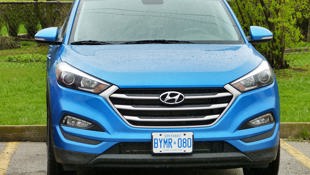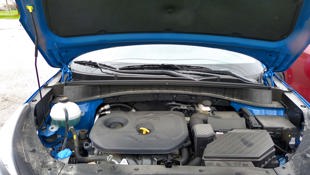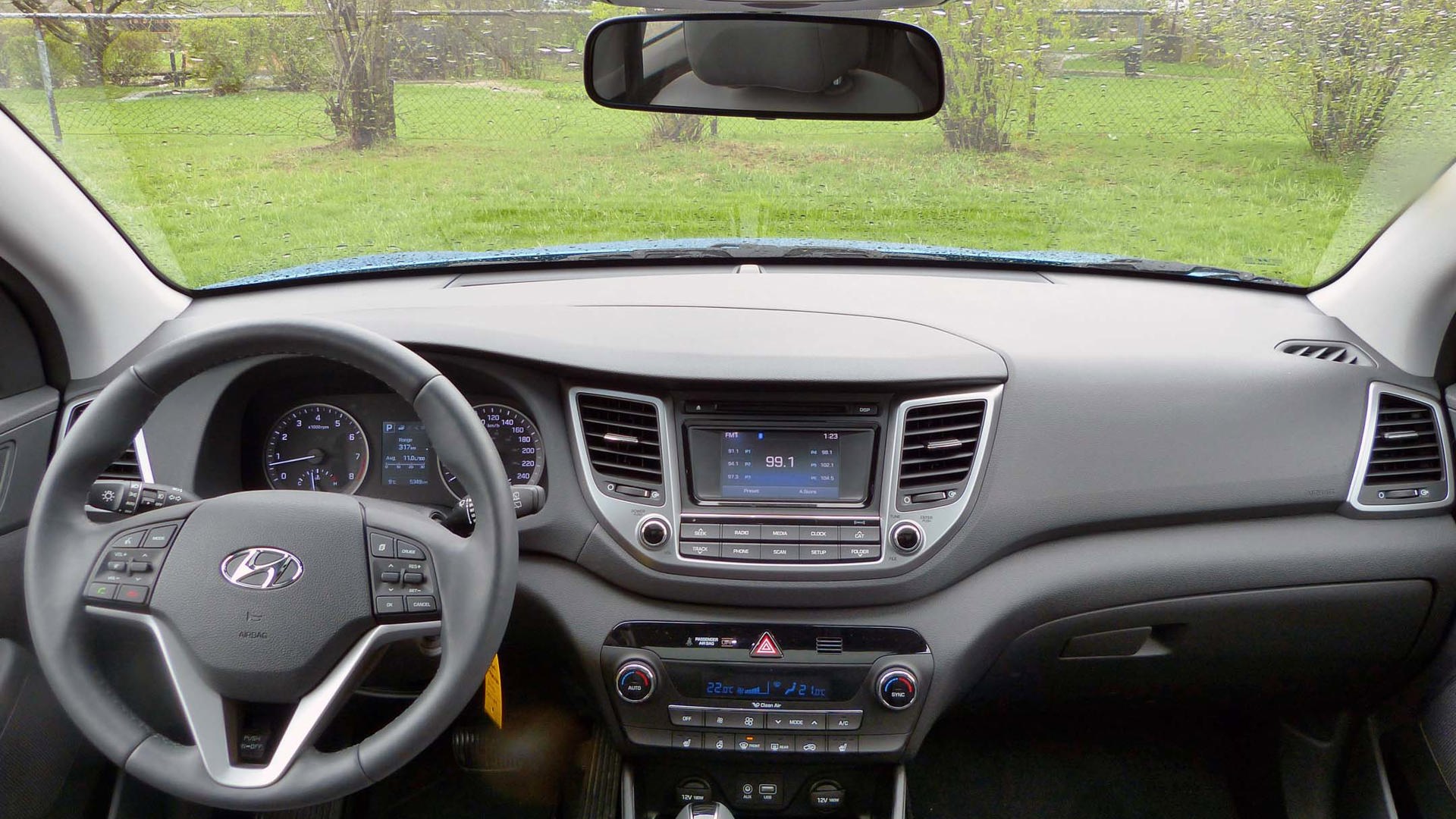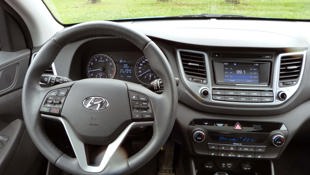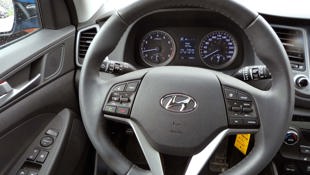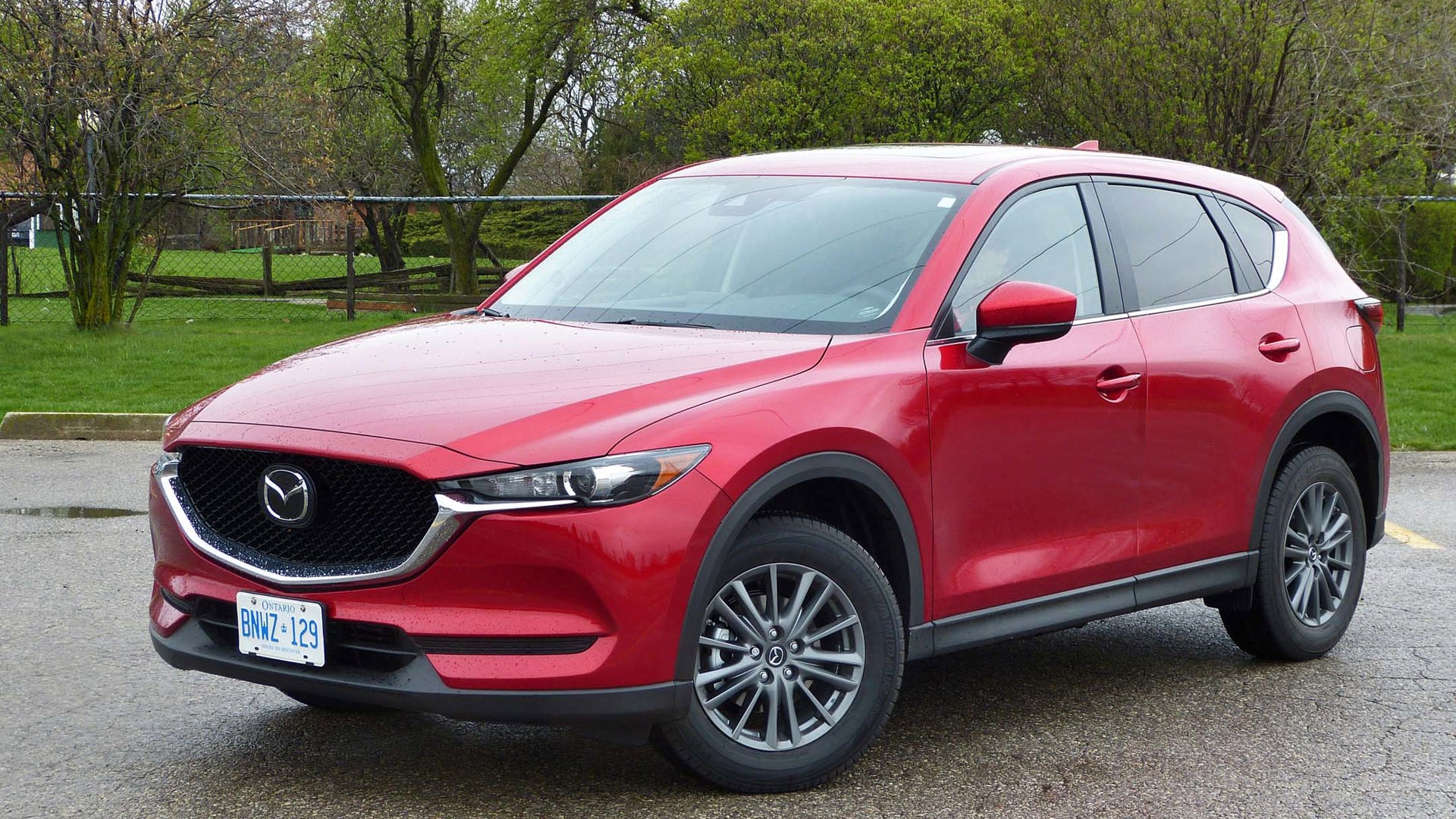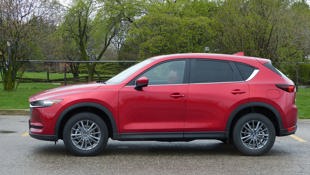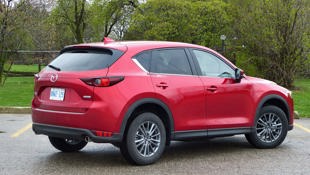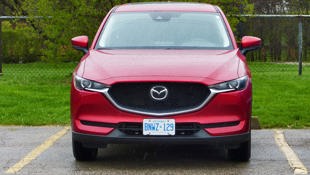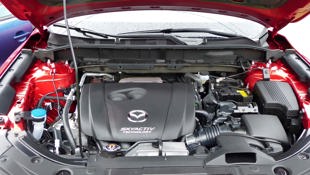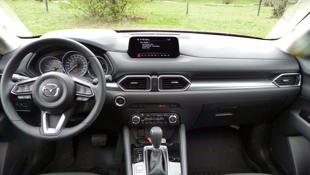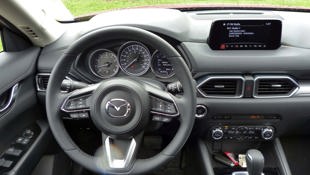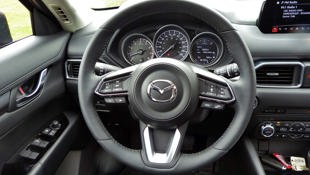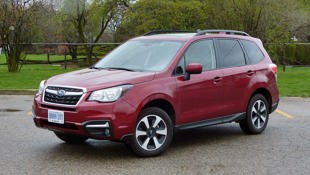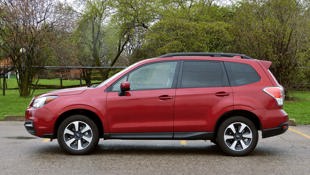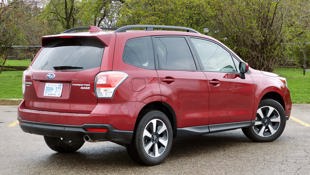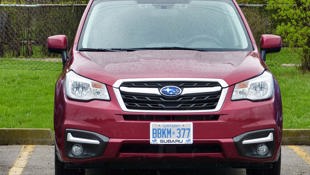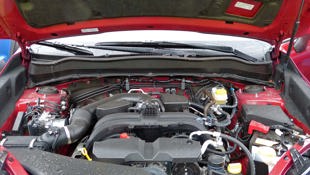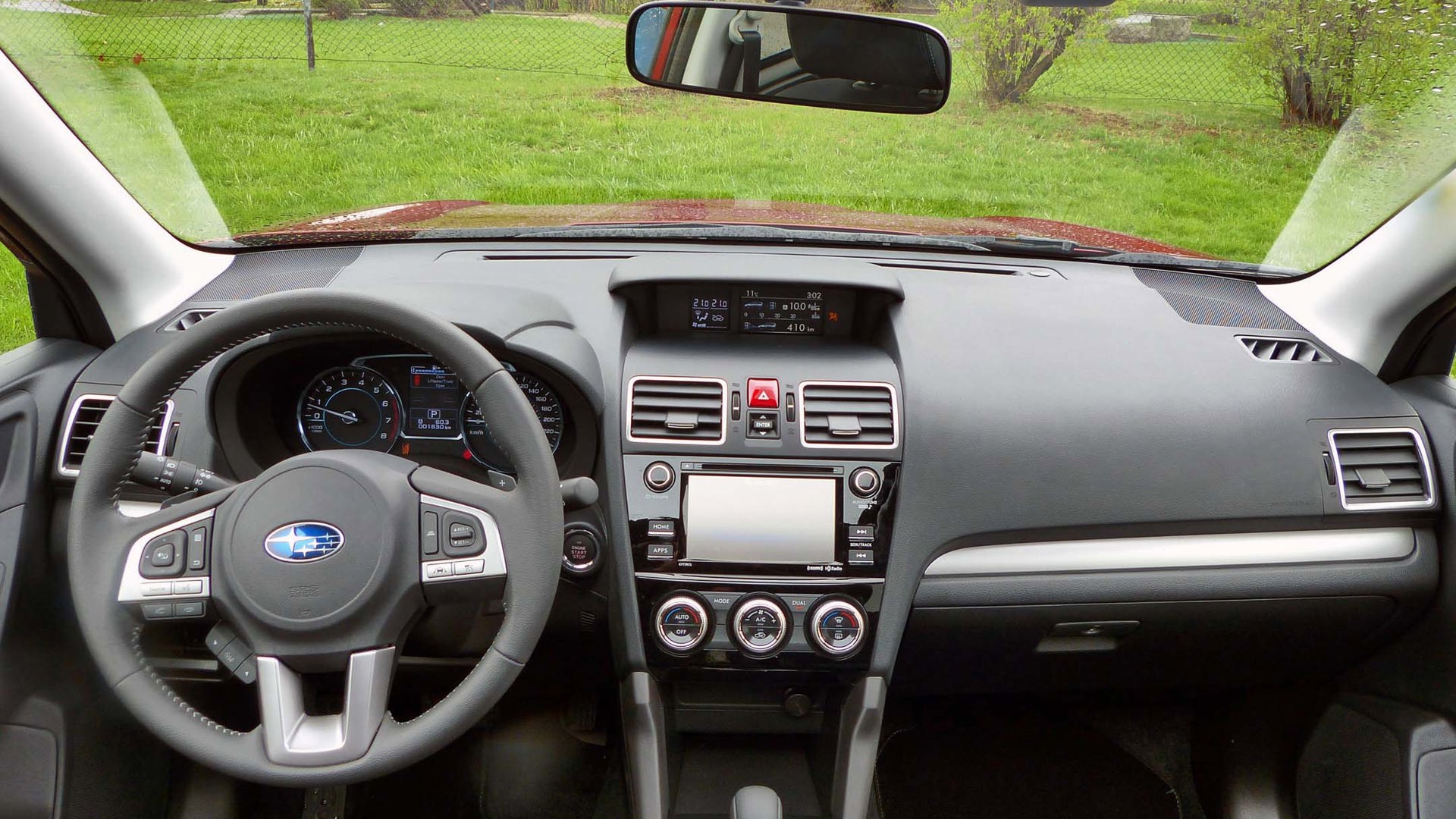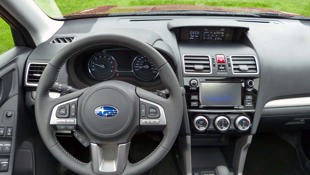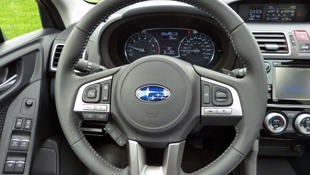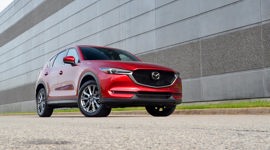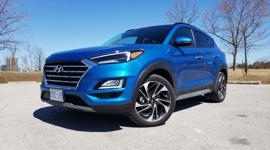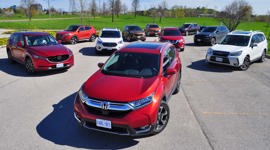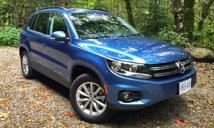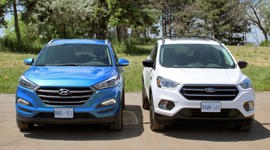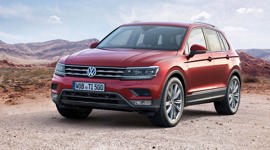Comparison Data
|
2017 Mazda CX-5 GS
|
2017 Subaru Forester 2.5i Touring w/ Tech
|
2017 Volkswagen Tiguan Wolfsburg Edition
|
2017 Hyundai Tucson 2.0L SE AWD
|
|---|---|---|---|
|
Engine Displacement
2.5L
|
2.5L
|
2.0L
|
2.0L
|
|
Engine Cylinders
I4
|
H4
|
I4
|
I4
|
|
Peak Horsepower
187 @ 6,000
|
170 @ 5,800
|
200 @ 5,100
|
164 @ 6,200
|
|
Peak Torque
185 @ 3,250
|
174 @ 4,000
|
207 @ 1,7000
|
151 @ 4,000
|
|
Fuel Economy
10.2/8.3/9.2
|
9.2/7.4/8.4
|
12/10/11.1
|
11.4/9.3/10.4
|
|
Cargo Space
875 / 1,687
|
892 / 1,940
|
647 / 1,589
|
877 / 1,752
|
|
Base Price
$31,100
|
$33,295
|
$30,198
|
$30,899
|
|
A/C Tax
$100
|
$100
|
$100
|
$100
|
|
Destination Fee
$1,895
|
$1,675
|
$1,795
|
$1,805
|
|
Price as Tested
$35,945
|
$35,070
|
$33,543
|
$32,804
|
|
Optional Equipment
$2,850 – Soul Red Crystal Metallic Paint $450, Comfort Package (power moonroof, automatic dual-zone climate control, rear passenger vents, keyless entry) $1,500, I-Activsense Package (req. Comfort Package, radar cruise control w/ Stop & Go, smart brake support, distance recognition support system, forward obstruction warning, land-departure warning, lane-keep assist, high-beam control, colour instrument cluster display) $900
|
None
|
$1,450 – Panoramic Power Sunroof $1,450
|
None
|
To say the compact SUV segment is an important one would be as dramatic an understatement as it is to say the Sahara desert is “a tad dry.” That’s why we have had our fair share of SUV comparison tests here at autoTRADER.ca. For 2017’s crop though, we’re doing things a little differently.
Every mid- or base-trim car we were able to wrestle out of the manufacturers, and it’s a compelling crop.
This two-part, two-week comparison will look at compact SUVs in two guises.
In Part 1, we lock in a four-car mid-trim shootout. This represents every mid- or base-trim car we were able to wrestle out of the manufacturers, and it’s a compelling crop.
We attempted to gather as many compact SUVs as we could for less than $35,000 with Freight and PDI included, and ended up with four ranging from the $32,804 Hyundai Tucson to the cheekily belt-stretching Mazda CX-5 at $35,945.
Given the option-heavy nature of press fleets there are naturally absentees, but we will cover them in Part 2, when we open up the pricing range to around $40,000 and take on 10 SUVs in one mega-comparo.
For now, let’s focus on the cars brave enough to come out and woo us with their value-forward charms: The 2017 Hyundai Tucson, 2017 Mazda CX-5, 2017 Subaru Forester and the 2017 Volkswagen Tiguan.
Fourth: 2017 Volkswagen Tiguan Wolfsburg Edition – Peter Bleakney
Considering the current first-generation Tiguan is about to be replaced with an all-new larger version built on VW’s fresh MQB architecture, it may not have been entirely fair to include the $33,543 Tiguan in this little shootout. After all, the old girl is 10 years old.
But let’s not count her out just yet. Yes, her dash design is long in the tooth but build quality and fit and finish are up to VW standards. And her bones are osteoporosis-free, showing some pretty spritely moves. Thanks to its 2.0L turbo engine with 200 horsepower and 207 lb-ft from only 1,700 rpm (the only blown four here), she can show her taillights to this bunch too.
The Tiguan trailed in feature content (some others sported driver’s aids, navigation and niceties like heated steering wheels) and its cargo space was the smallest – it rides on the shortest wheelbase and has a fairly truncated, er… trunk. That said, for some buyers the Tiguan’s more compact dimensions could be just right. And it must be noted that this Tiguan Wolfsburg Edition had the best infotainment interface with the biggest screen, the best sounding audio and it was the only one here with Android Auto and Apple CarPlay.
Tiguan shines in driving feel
Volkswagens tend to shine when it comes to driving feel, and here the little Tig displayed the traits of its German engineering – it showed the sharpest steering, brakes and handling. All the controls work with mechanical harmony and ride quality is generally good, although it gets pitchy on some surfaces due to the short wheelbase.
We appreciated the nine-spoke Novara alloys, big panoramic roof and nice two-tone leather interior treatment bestowed upon this Wolfsburg Edition. Stephanie noted the tuck-away rear-view camera was the only one that stayed dry on our rainy day of testing, and the VW-signature ski pass-through in the second row added a nice touch of practicality. Additionally, the 60/40 rear seat easily flips forward creating a flat load space.
The six-speed auto is programmed to keep revs barely above idle when tooling around. As a result, turbo lag and gear hunting will hamper requests for a quick getaway. Sport mode fixes that, but it will likely affect fuel consumption, which incidentally was the highest of this group, both published and observed. The Tiguan was the only SUV here asking for premium fuel.
There’s no question this fine-driving first-generation Tiguan has its charms, as evidenced by our Steve Bochenek who scored it in first spot. In Volkswagen speak, Wolfsburg Edition generally equates to “swan song”, so we can consider this to be the first-gen’s curtain call while the second-gen Tiguan waits in the wings.
Third: 2017 Hyundai Tucson 2.0L SE AWD – Lesley Wimbush
It’s a measure of how good this segment has become that the Tucson placed where it did. Five years ago, this vehicle probably would have won. But with the explosive growth in compact SUV sales comes a corresponding expectation of value. Automakers simply can’t afford to fall behind when competitors are undergoing refreshes at an accelerated rate, and offering increasing levels of features and sophistication.
The cheapest in our bunch at $32,804, the Tucson is a great little all-around crossover. It’s stylish and roomy, is protected by a terrific warranty and is the only one of our bunch to boast a locking differential.
In Jacob’s opinion the Tucson is the best-looking of our bunch, though I prefer the Mazda CX-5’s sharp swoopiness. The cabin has plenty of room, ranking second only to the Forester, but there are a few hard plastics and the dash and centre console could use a style overhaul. Really comfortable seating and easy to get in and out of, but as sharp-eyed Jacob noted, it’s the only one without wraparound rocker panels. In our slushy, filthy winters, this means you’re sure to end up with crud on your jeans when climbing in and out. It’s redeemed somewhat by its heated steering wheel – and at this trim level, only the CX-5 also comes with this marvellous little feature.
Where are the apps?
We were disappointed by its lack of Apple CarPlay or Android Auto, too, as even the lowest-ranked vehicle in the test group is equipped with these apps. When it’s standard on even the base Elantra, it’s puzzling that it wouldn’t be found on Hyundai’s entry in what’s currently the most competitive segment in the market.
The Tucson was also the only one of the group not to have push-button start. Admittedly, some people don’t like this feature and prefer a traditional turn-key. But the ergonomics are simple and plainly marked and there are plenty of nooks and cubbies for cellphones and such.
On the road, the Tucson is competent, if rather bland. Most of us remarked on its quiet manners and smooth powertrain, but admitted that the steering and handling are rather numb. Steven compared it to an “extended Easter Sunday mass – boring and tepid.”
It’s important to note that the Tucson is equipped with an AWD lock button. While the Tucson defaults to a front-wheel drive on the highway to conserve fuel, there is AWD on demand when needed. It’s not a true locking centre differential as found in serious off-roaders, but rather a system that engages and decouples the rear axles depending on conditions. The driver can choose to lock in the all-wheel-drive system during adverse driving conditions – an attractive feature for Canadian winters.
It may be smooth and quiet, but with only 164 hp and 151 lb-ft of torque, the Tucson’s 2.0L four-cylinder is the least powerful of the group. And being the heaviest, it also has the most mass to move around – which results in the Tucson with 11.4 L/100 km city, 9.3 highway and 10.4 combined, having the second-worst fuel efficiency ranking. Upgrading to the 1.6L turbo engine ($1,500) not only bumps the power to 175 hp/195 lb-ft, but the official 9.9 L city, 8.5 highway and 9.3 combined is lower than the naturally aspirated 2.0L. It also comes with a transmission upgrade: Hyundai’s new seven-speed automatic instead of the base six-speed auto. This is a faster shifting, responsive powertrain suitable for the sportier driver; the average buyer would probably be just as happy with the base engine.
Overall, the Tucson is a good-looking, decent handling crossover with lots of interior space and a comfortable ride. It could use a higher level of standard content – such as Apple CarPlay, Lane Departure, keyless entry or adaptive cruise control – to be more competitive in this tough crowd.
Second: 2017 Mazda CX-5 GS – Stephanie Wallcraft
When I found out I would be covering the Mazda CX-5 in this comparison test, I was sure I had drawn the long straw.
After all, we’re proven fans of Mazda here at autoTRADER.ca, and the CX-5 is all-new for the 2017 model year and makes quite the first impression with its updated styling inside and out. To my eye it comes together into a stunning package that’s easily the best-looking of this bunch. I felt sure that top marks would follow on just about everything else and I’d be tasked with glowingly gushing about our winner. And in talking to my fellow testers beforehand I learned that I wasn’t the only one making presumptions.
But once I put down my cup of Kool-Aid, tossed my preconceptions aside, and hit the start button on the CX-5, I began to discover some imperfections.
Don’t get me wrong: there’s much to enjoy about this car. Mazda’s SkyActiv engines are brilliant, and this 2.5-litre four-cylinder example is no exception. Its naturally aspirated responsiveness combined with 187 hp and 185 lb-ft of torque that hits its peak at a very accessible mark of 3,250 rpm makes it peppy and quick. Head-to-head, though, our scorers gave both the Tiguan’s turbocharged mill and the Forester’s ultra-smooth 2.5-litre boxer higher marks, with the latter coming out on top both for smoothness and better fuel economy.
Several of our testers also lamented the automatic transmission in this GS trim.
“I’ve driven this car with a stick and it’s a blast – the automatic makes it seem more ho-hum, especially when you consider the lack of paddle shifters,” Wimbush says.
Bochenek concurs, saying that “the back/forth shifter isn’t intuitive and has nothing on paddling.”
Rougher ride hurts CX-5 overall
We also tied the CX-5 for second place in braking and steering feel – the latter being very good but a tad short of the acute sharpness we’ve become accustomed to in Mazdas – and in last place for ride comfort, which has more of a performance-oriented tuning but as a result feels rough and crashy for an SUV, particularly next to the Forester’s cloud-like float. Though scoring on noise, vibration and harshness was very tight, the CX-5 received the fewest points from us, especially surprising since all-new models have often made huge leaps in this area over the past couple of years.
Not everyone loves the dial interface Mazda uses for its infotainment system – “too much dicking around just to change a radio station,” Bleakney says – and while I typically find it less distracting and more ergonomic than other types, in the CX-5 the entire setup is set too far backward for my comfort. My short arms and legs require me to sit fairly far forward, and by the time I’m in in the correct driving position I’ve moved so far up that I need to wrap my elbow almost around to the back of my seat before the dial is within reach. Mazda also hasn’t yet made mobile apps available in their vehicles, though the company has said that compatibility is coming and is expected to be retrofittable all the way back to 2014.
The CX-5 GS has the most robust feature offering of these vehicles with a heated steering wheel, power liftgate, keyless entry, blind-spot detection, lane-departure warning, and adaptive cruise control, and a 40-20-40 split rear seat all included, the latter being exclusive in this field.
But it’s also the most expensive of the four at $35,945, and in spite of that it misses the mark on some other key points such as placing third in cargo volume with 875 L, having the smallest sunroof, and offering little in the way of off-roading bells and whistles.
Considering that the Forester beats out the CX-5 on all three of these aspects and also boasts great drive dynamics, better fuel economy, and superior visibility, we’ll have to hand in our fan club cards – we simply couldn’t hand the crown to Mazda this time around.
First: 2017 Subaru Forester 2.5i Touring with Technology Package – Steven Bochenek
Many buyers nowadays (understandably) want one car to do it all. Carry your bike, flatten to become a bed, be fuel efficient, comfortable and quiet yet sporty – provide AWD with off-roading capabilities – and commute. A chameleon.
Meet your winner, the 2017 Subaru Forester 2.5i Touring with Technology Package. Everyone agreed this was the day’s best drive – but also checked many other boxes to win.
The Forester easily placed first for overall value
The $35,070 Forester scored first for overall value, earning it big points over its competitors. Value and Cargo Volume were the most heavily weighted categories in this test, and, yes, the Forester also placed first for cargo space. Indeed, if it had included a heated steering wheel, the Forester would also have placed first outright for Amenities rather than tying with the Mazda. I can make that blunt claim because I would’ve rated it higher.
But far from bribing buyers with bling, the Forester is a well-planned chameleon that appeals to multiple consumers on many levels.
For instance, are you a parent of small children? Stephanie is, and she noted the Forester’s “best setup for car seats ... the seat-embedded LATCH connectors in the front are ... far easier to connect and position at the correct angle.” Details!
No other tester included X-Mode. Highly useful if you’re off-roading, this switch brings the hill descent control and hill holder systems into your all-wheel drive experience. Sure, not everyone ventures off-road, but Subaru has built decades of business on such customers. This is their brand DNA.
Another Canada-friendly exclusive was the hood struts, pneumatic devices lifting the hood without a prop rod’s support. So there’s less fumbling in filth with your best gloves on.
Other important goodies? Power liftgate, adaptive cruise control, lane-departure warning and blind-spot warning, both elements of Subaru’s Eyesight System, which includes pre-collision braking and pre-collision throttle management that cuts power in case of what Subaru calls “an absent-minded start” in front of something big (like, say, a wall). Some competitors offered some of the above but the Forester provided the most features per dollar.
The Forester did not include keyless entry, Android Auto/Apple Car Play or the de rigueur heated steering wheel.
At this point, it’s probably safe to talk about the Elephant Man in the room
Ever googled chameleons? They ain’t pretty. By their box-ticking nature, SUVs become mobile shopping malls – practical, multi-functional; made for being inside and doing lots, but not great for looking at. Yet even in this mallish category, the woebegone, boxy Forester placed last for Exterior Styling – aka looks.
But not just last, really last. Like Eddie the Eagle last. You’ve-got-a-great-personality last.
Still, as Canadian fashion icon Red Green often advised: “If the women don’t find you handsome, they should at least find you handy.” The Forester makes up for looks with great personality and handiness. Do give it a test.
And malls are great inside! A benefit of the boxy exterior was the roomy interior with tall windows and superb sightlines. The feeling of light roominess was enhanced by the large sunroof.
Mind, the Forester proved its (lightweight) mettle during the test drive
There was no denying the effective control of noise-vibration-harshness (NVH), another category winner. The continuously variable transmission performed smoothly with little noise. The Forester’s nifty 2.5L four-cylinder engine achieves 170 hp at 5,800 cycles and torque of 174 ft-lb at 4,000, which may leave some wanting more power. But take another look at the price, features and lastly at curb weight. Despite the NVH rating, the Forester proved lightest, aiding its launch factor – amid all those other factors on your list.
The route included some quirks of engineering that Ontario’s Fun Police have yet to smother. The Forester greedily gripped in deep turns like an agile kitten with a new catnip mouse. For handling I gave the Forester maximum points. Moreover, being able to paddle shift, versus those non-intuitive back-and-forth shifters (sic), was a treat.
Or as Lesley summarized: “Thank you.”
